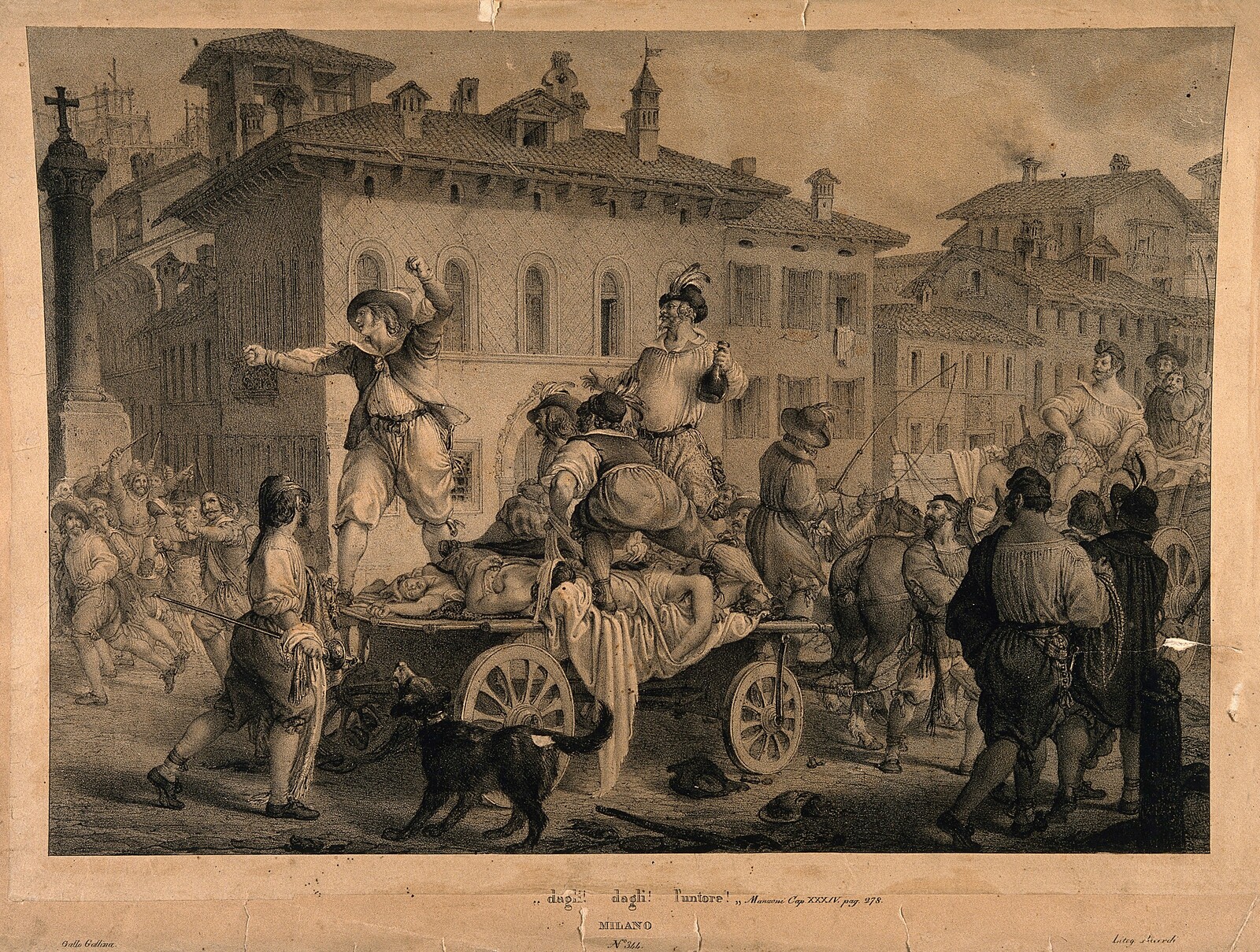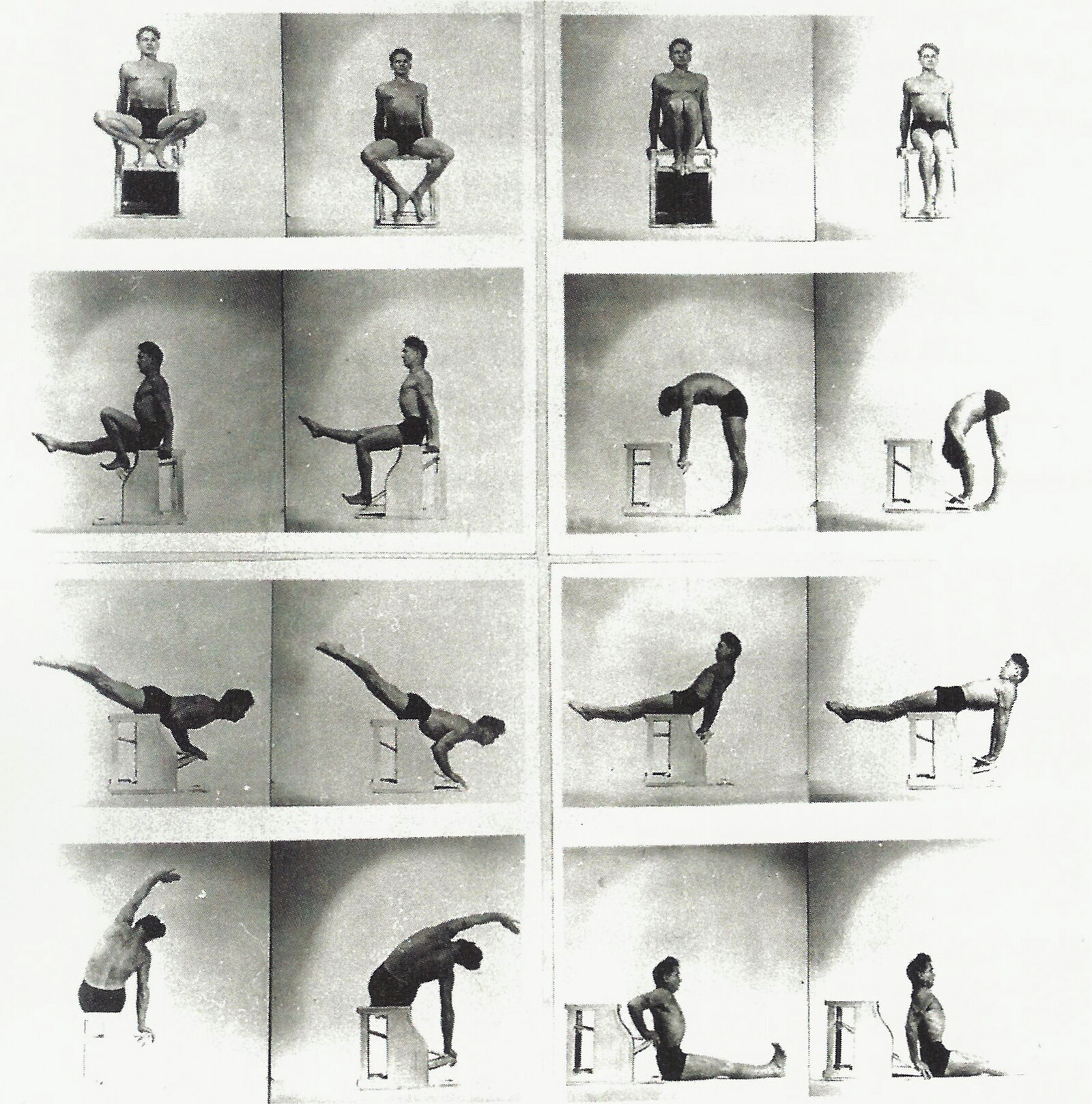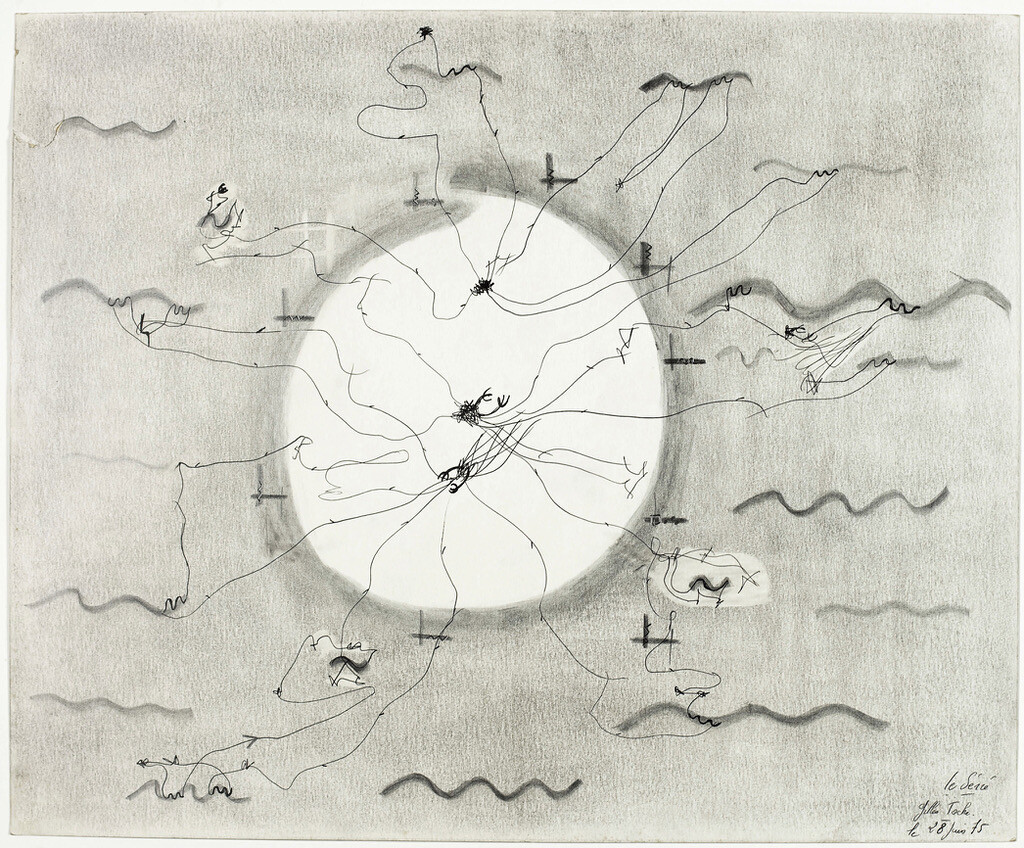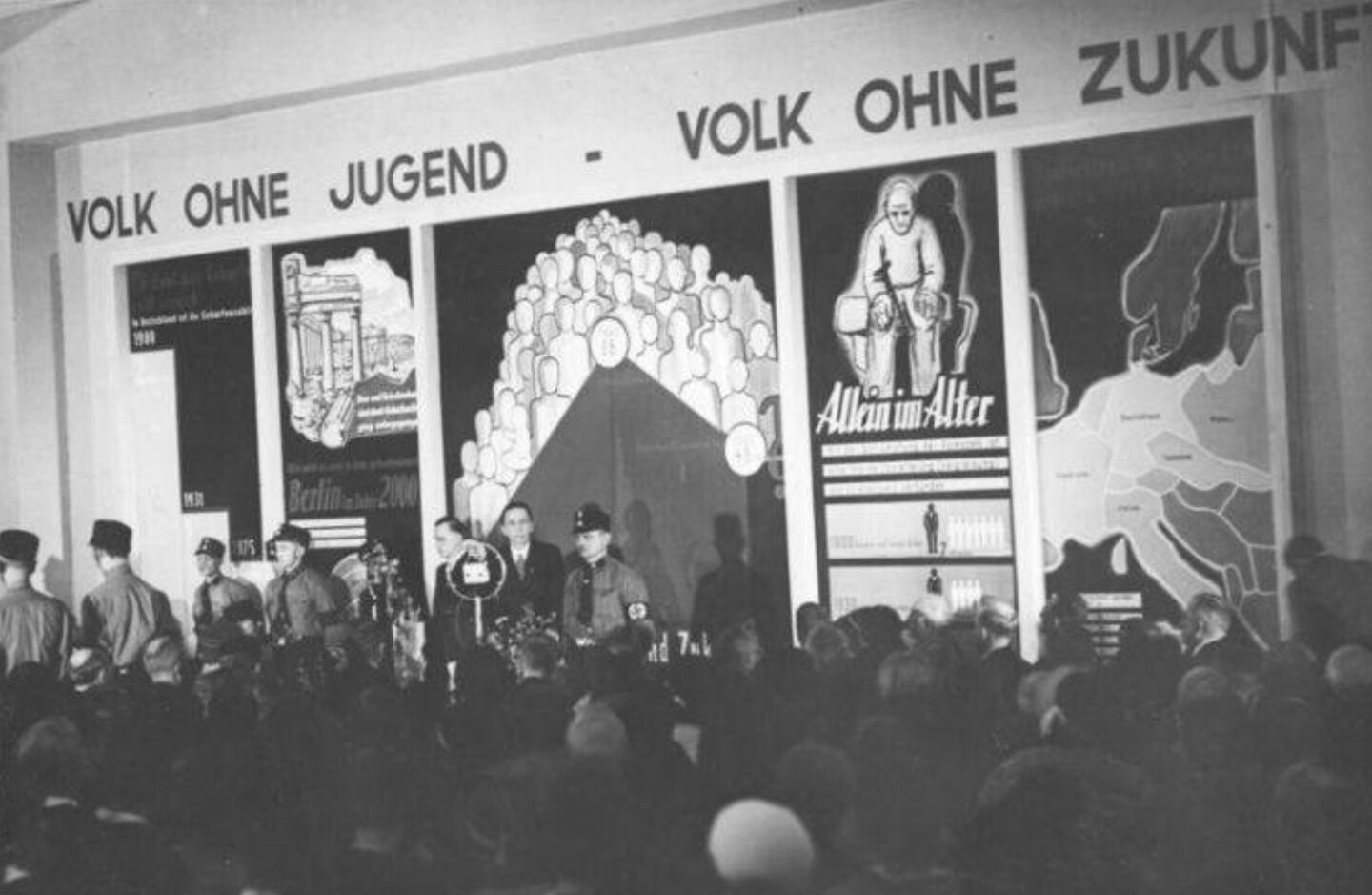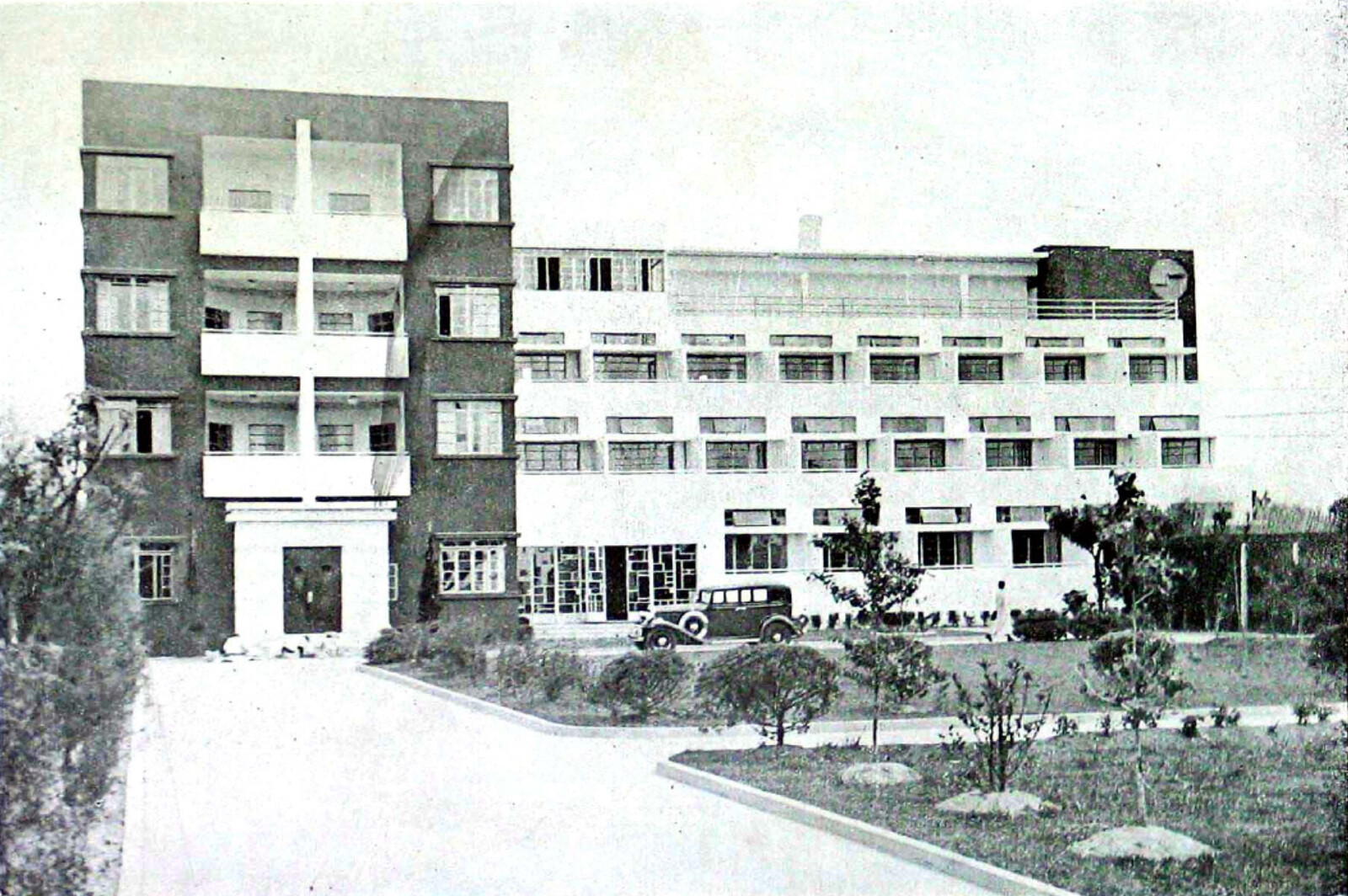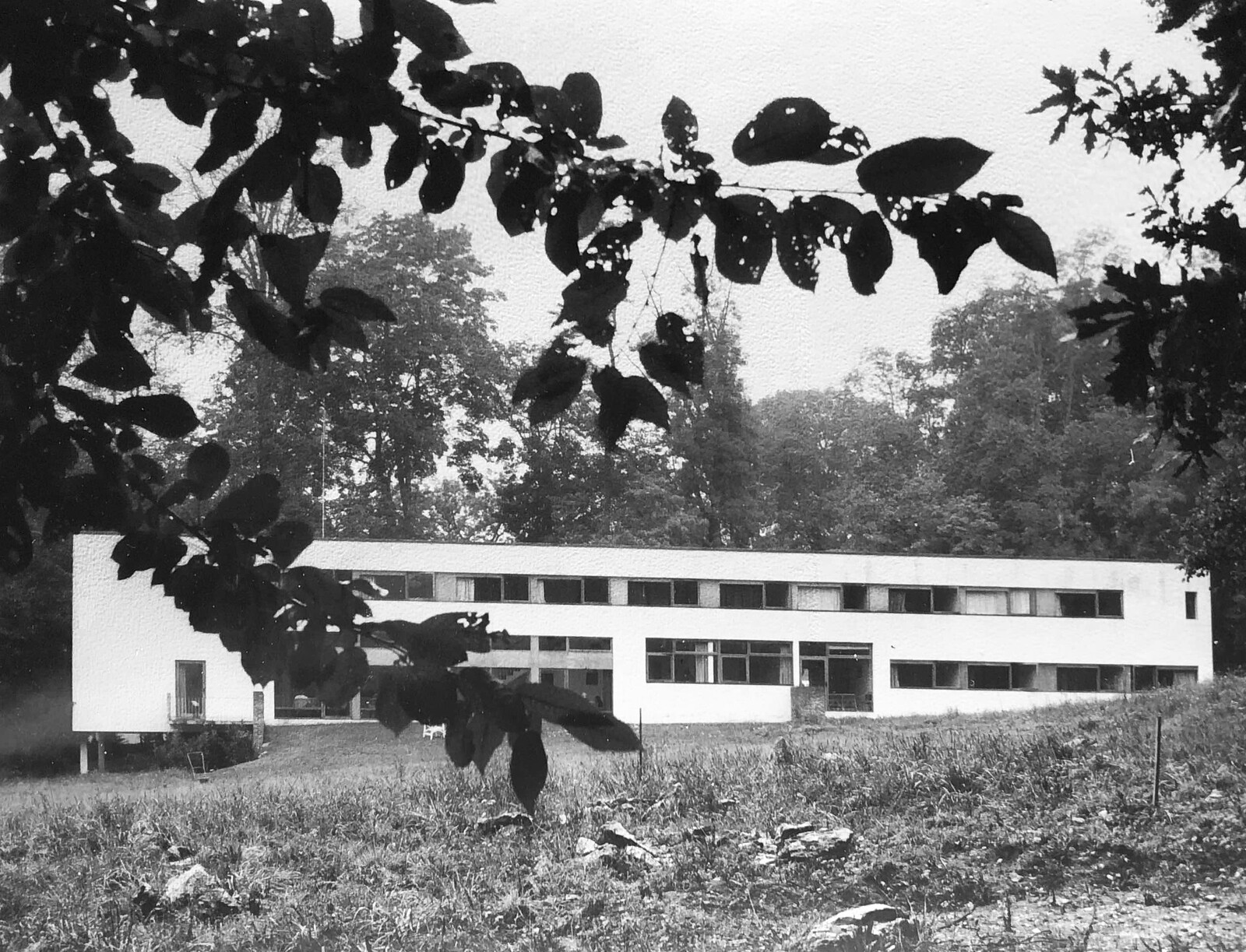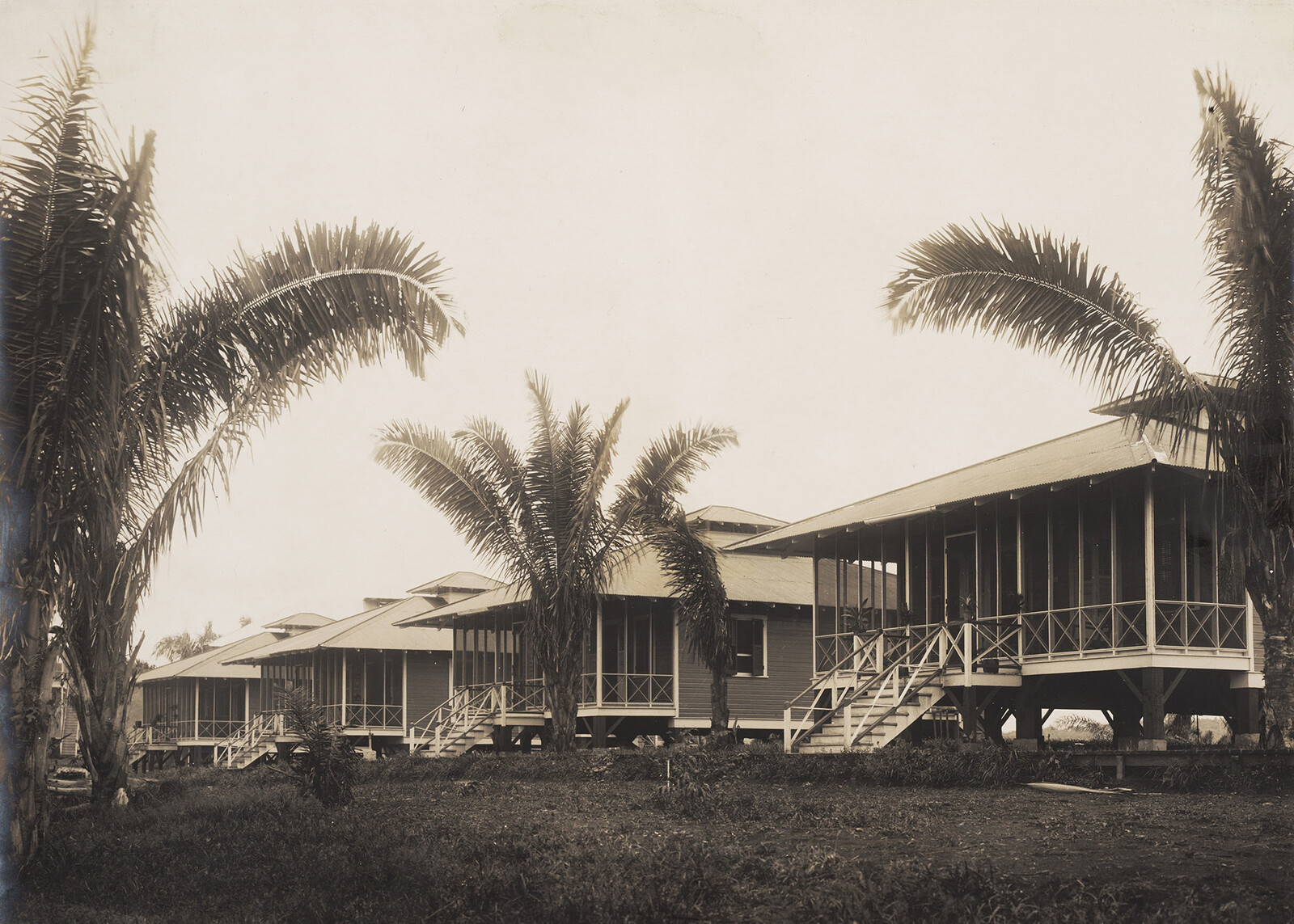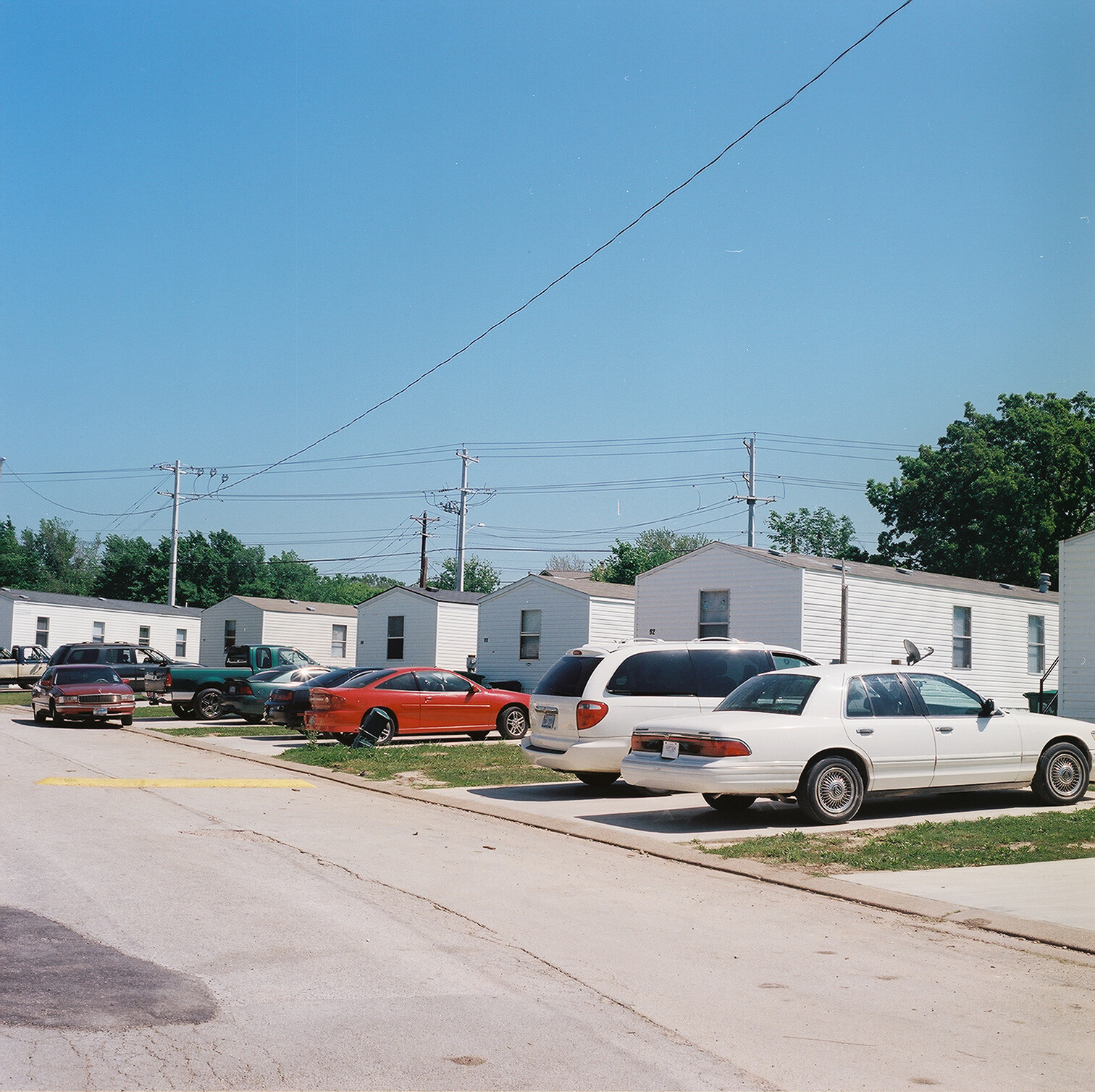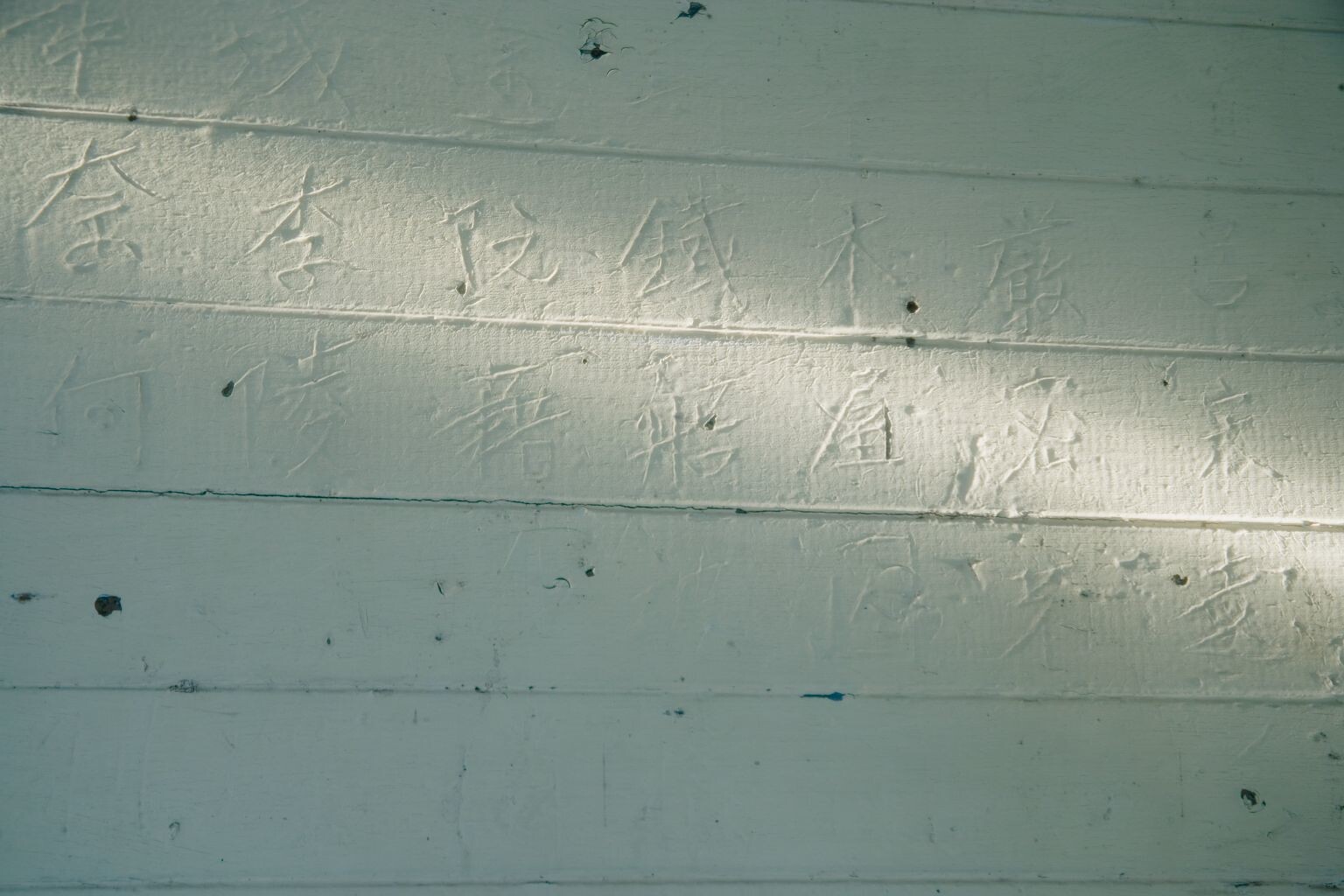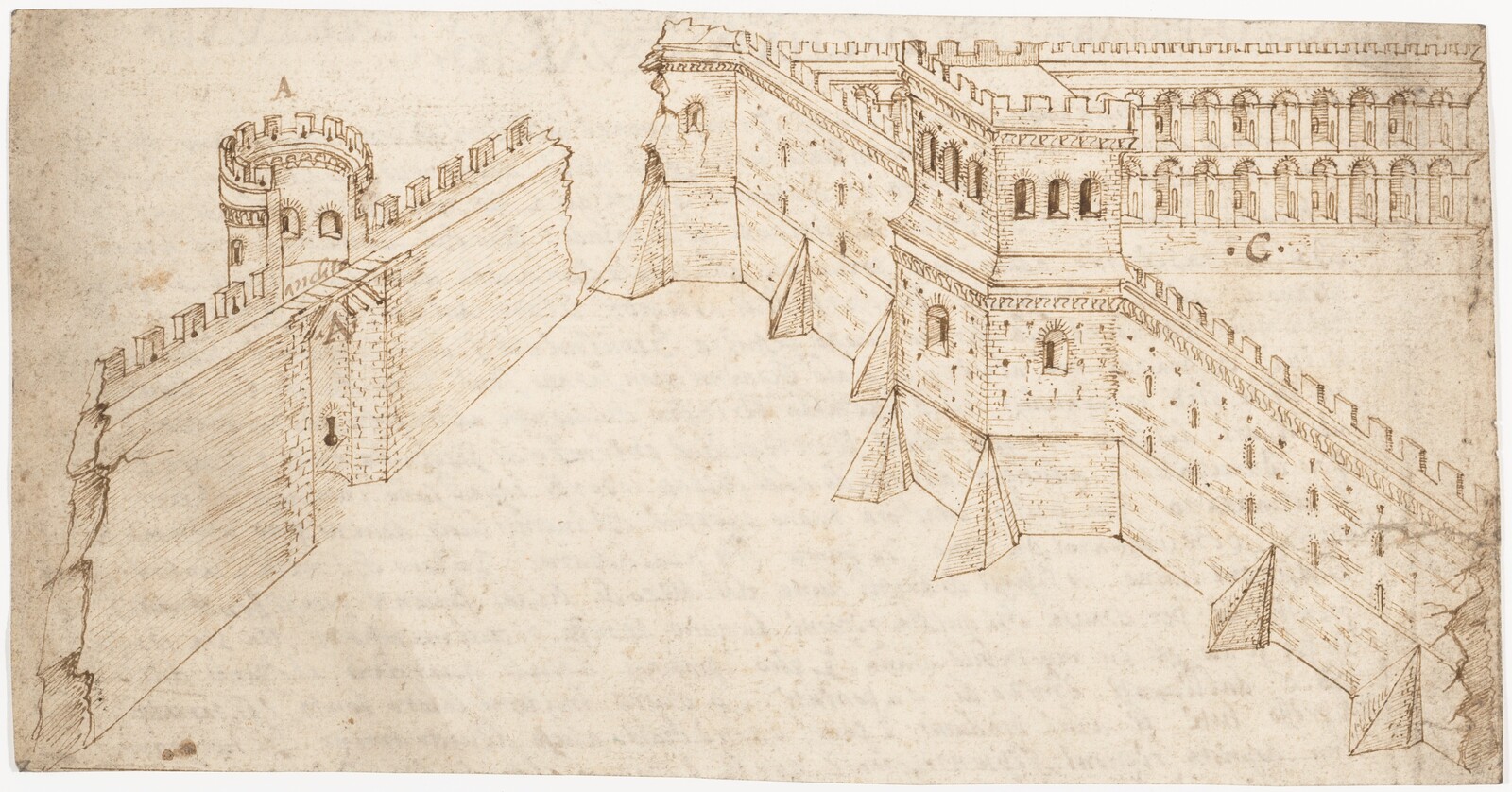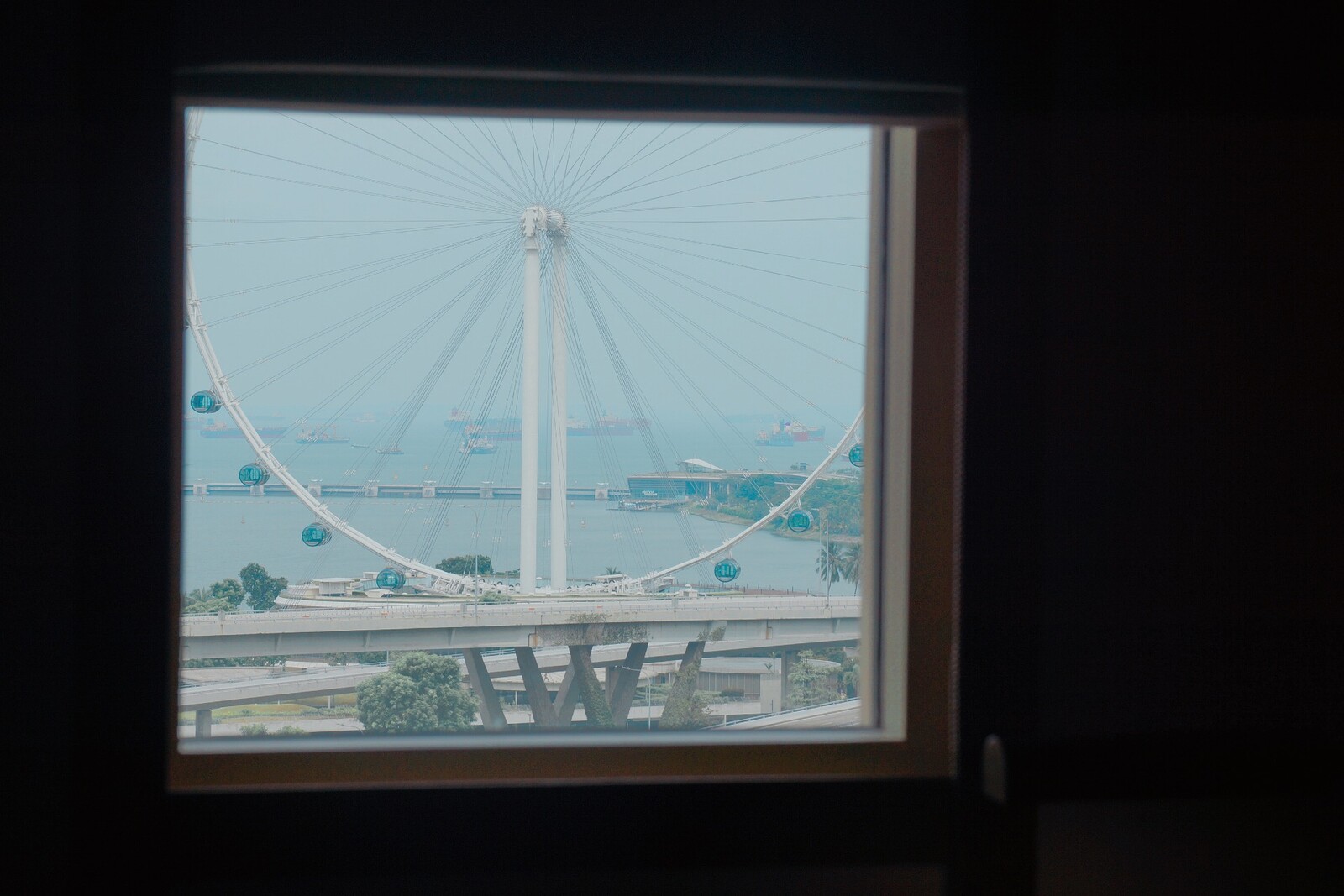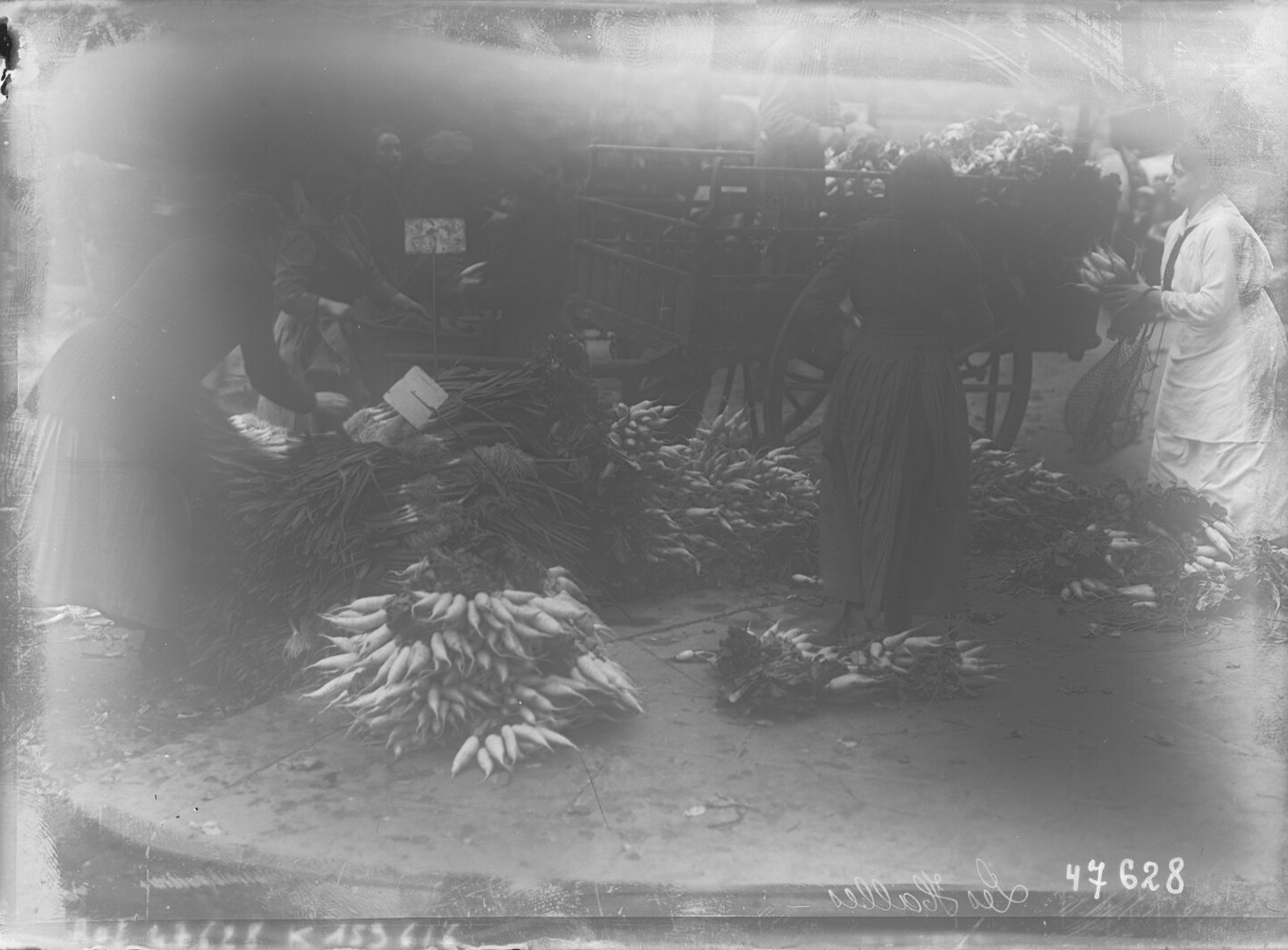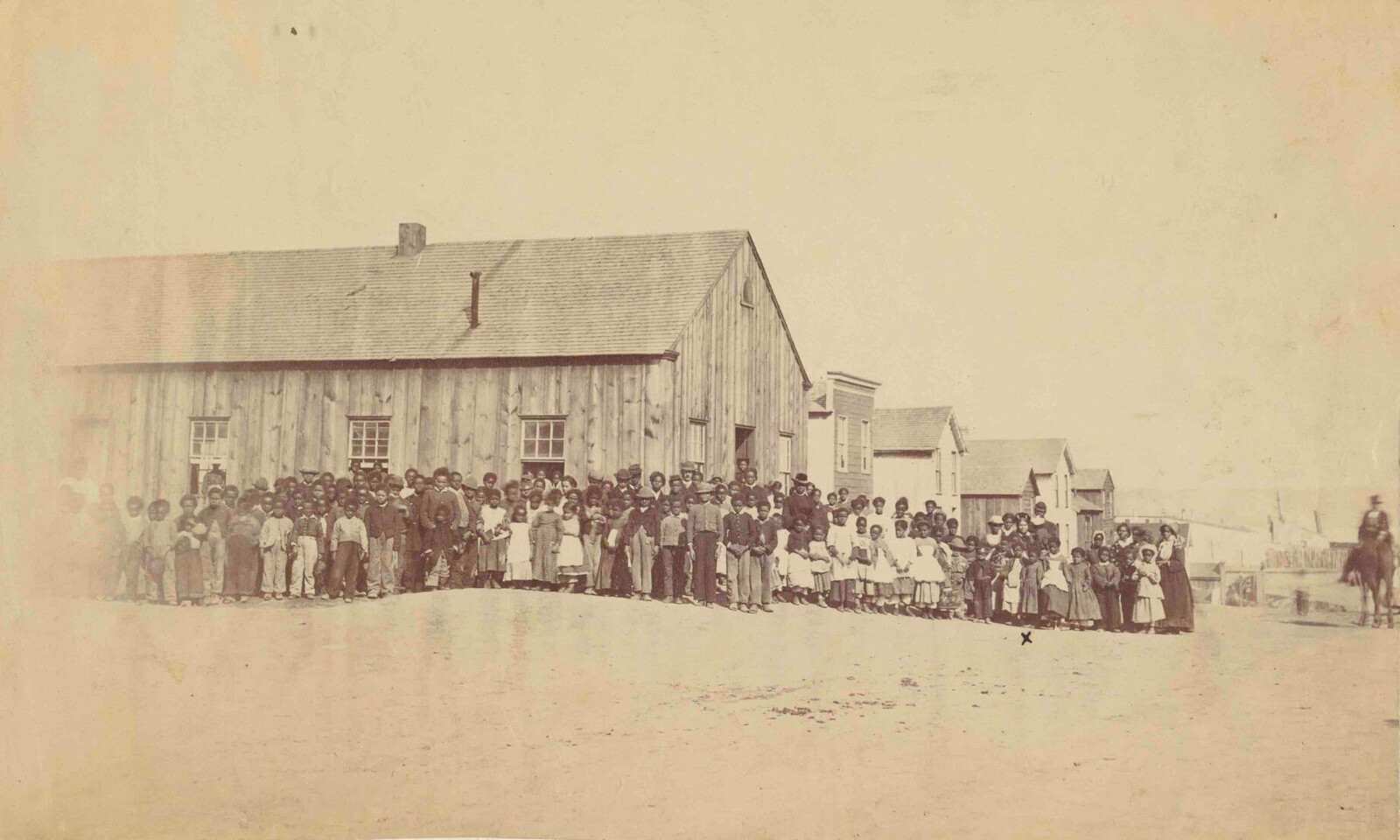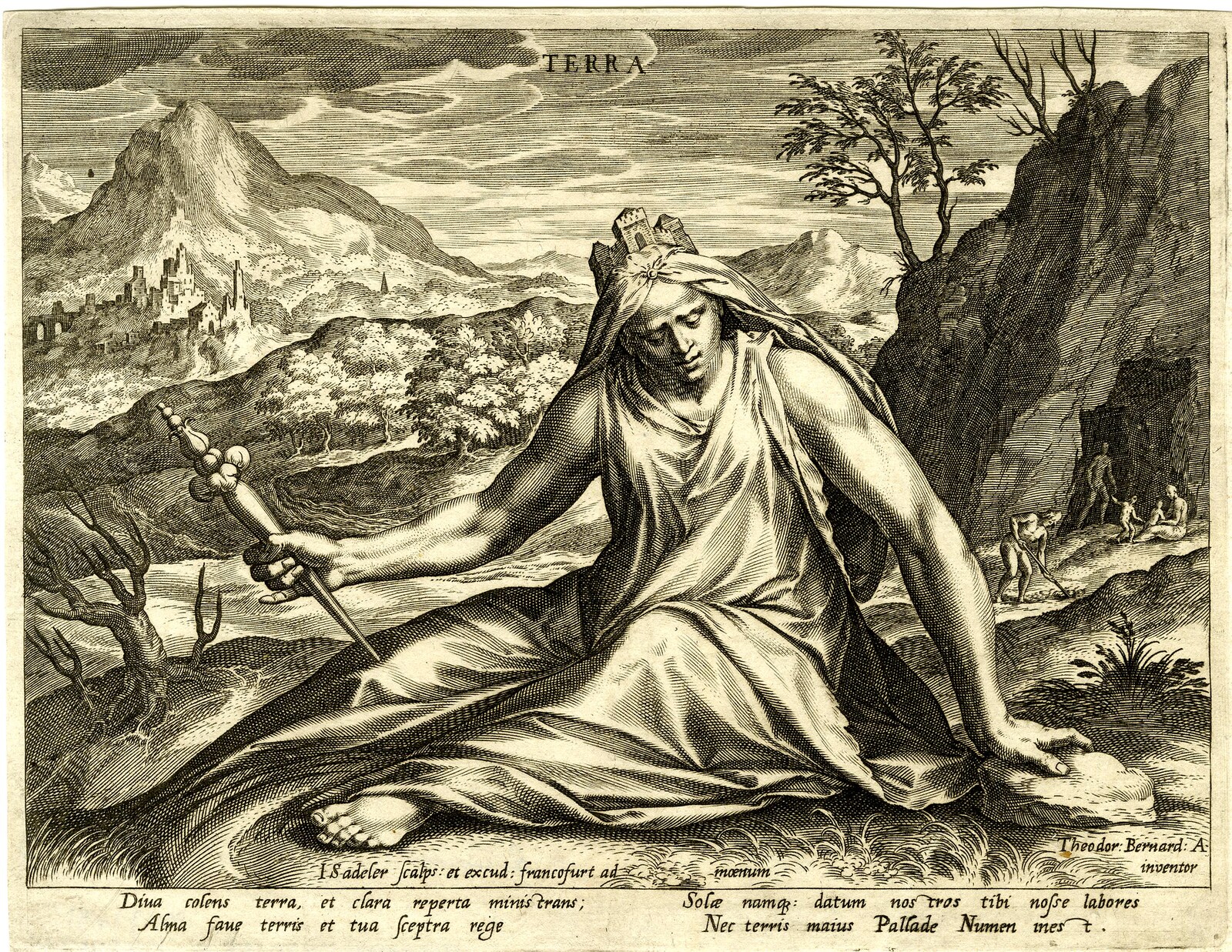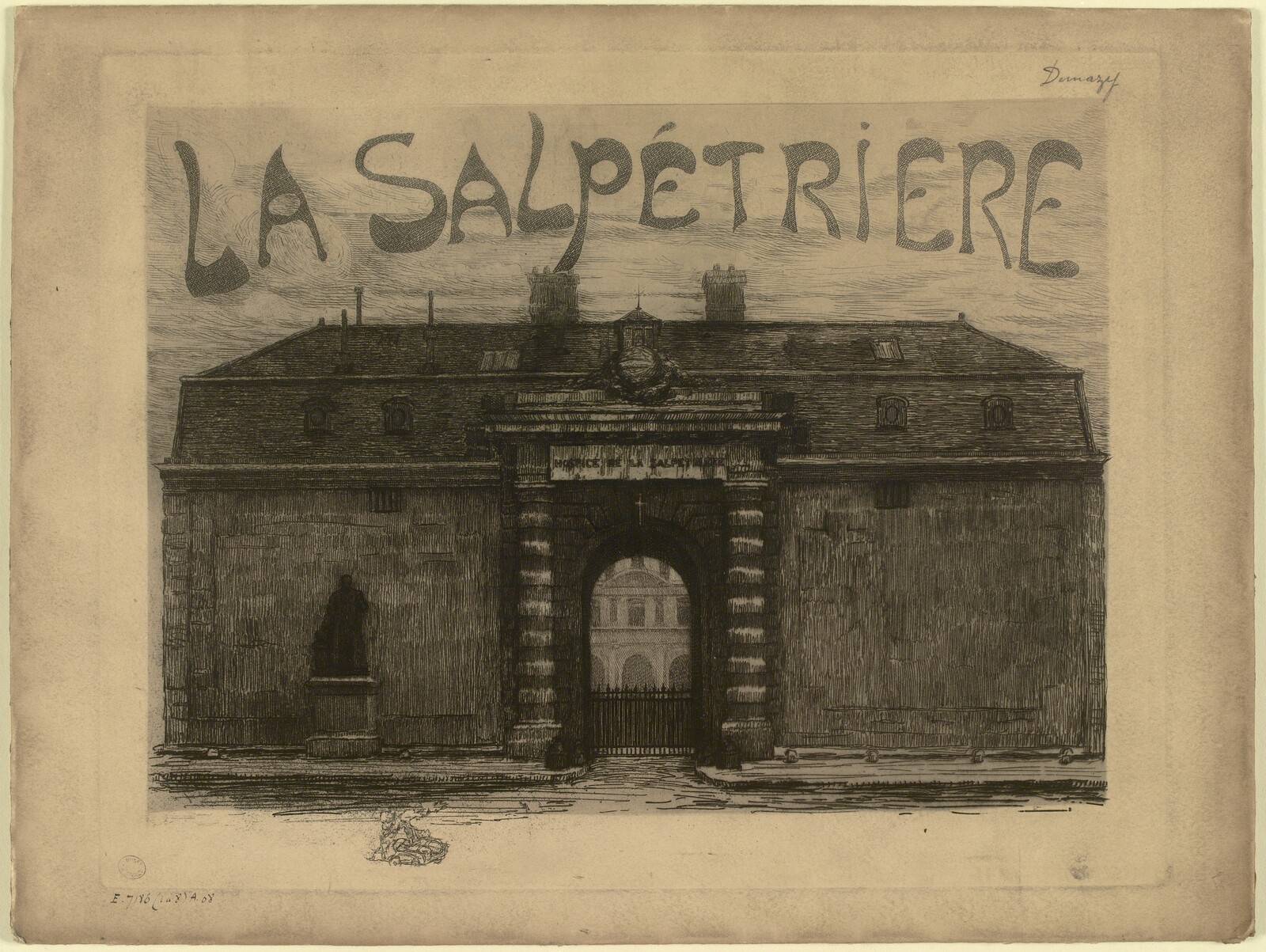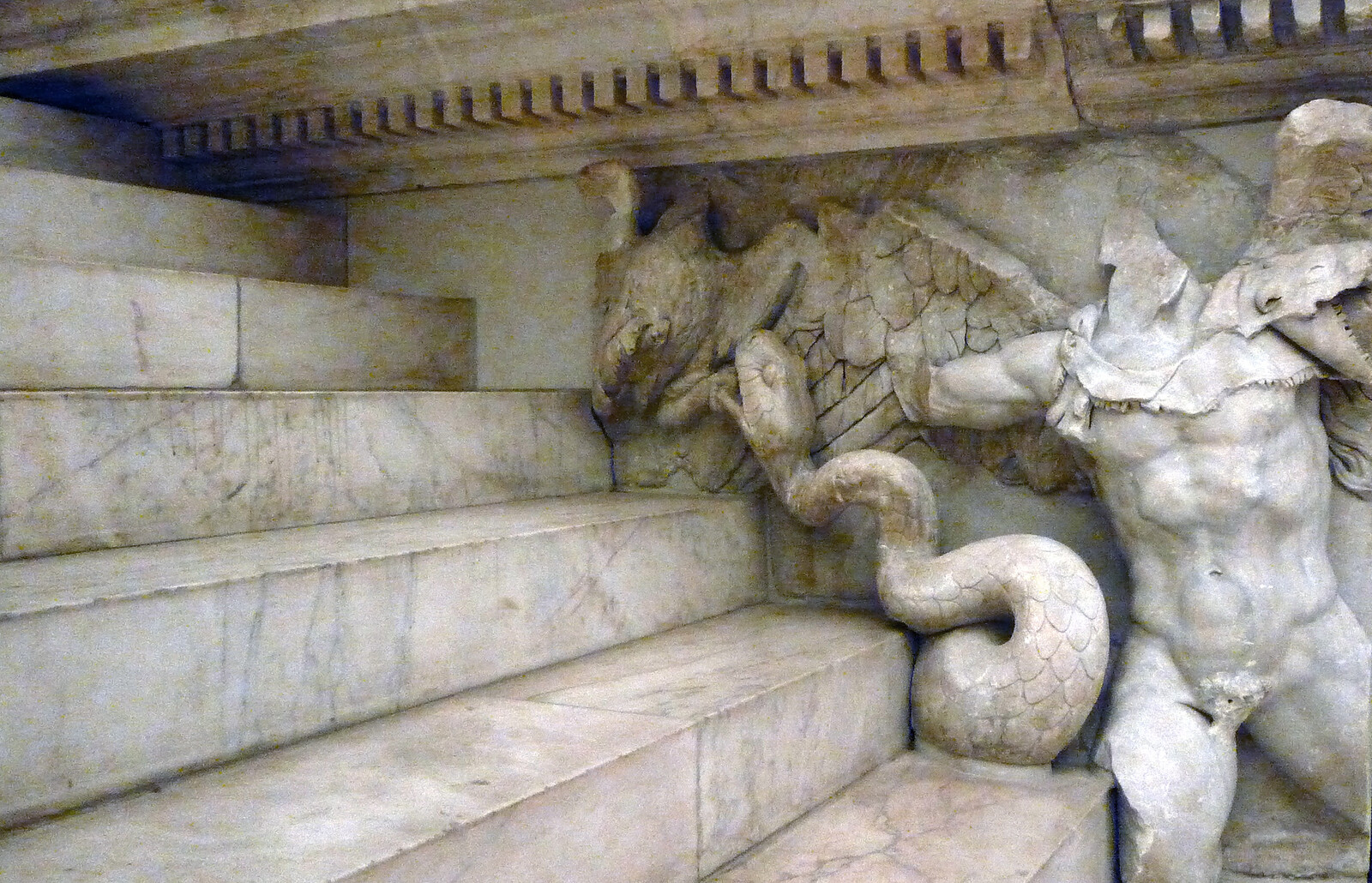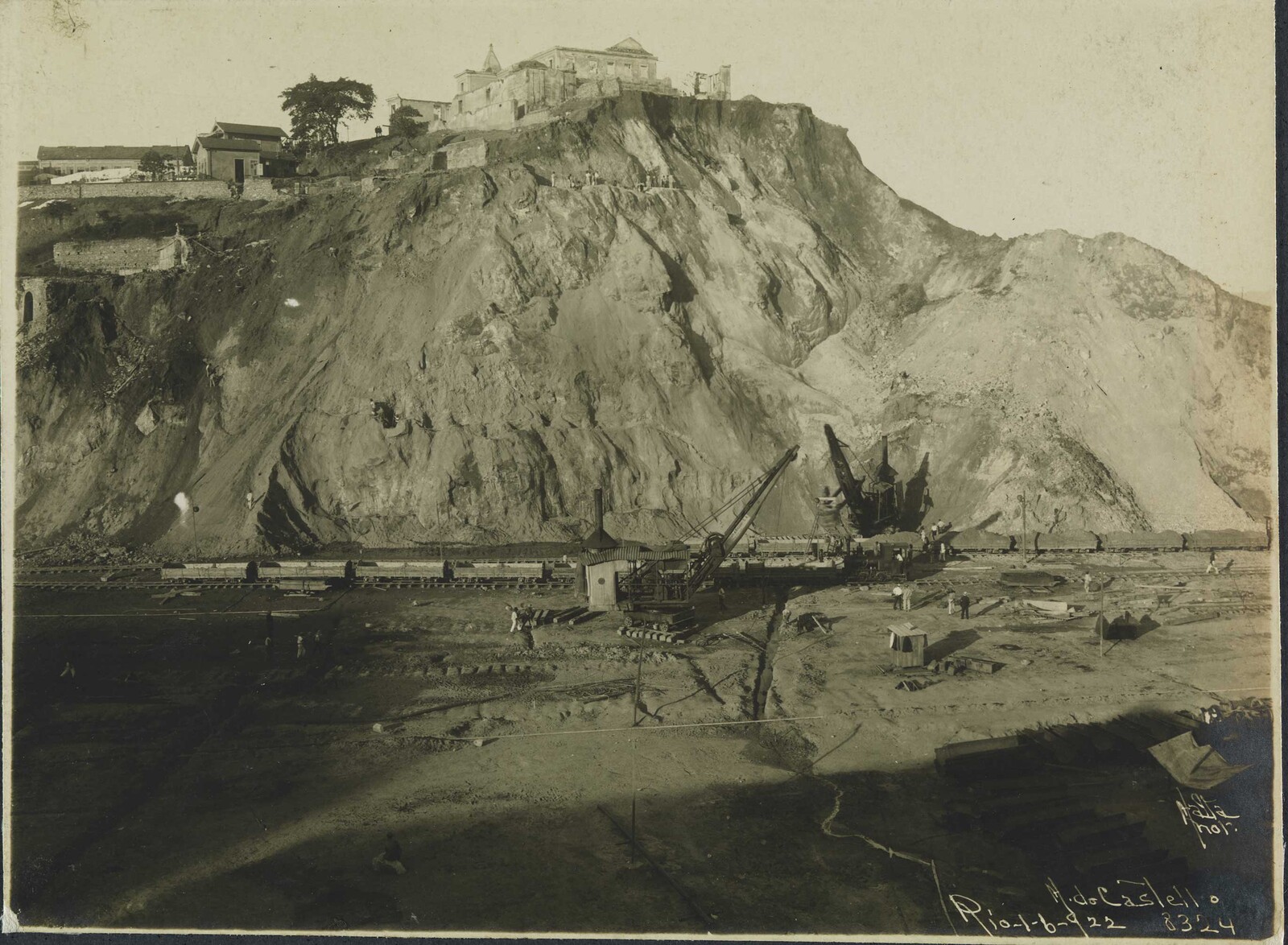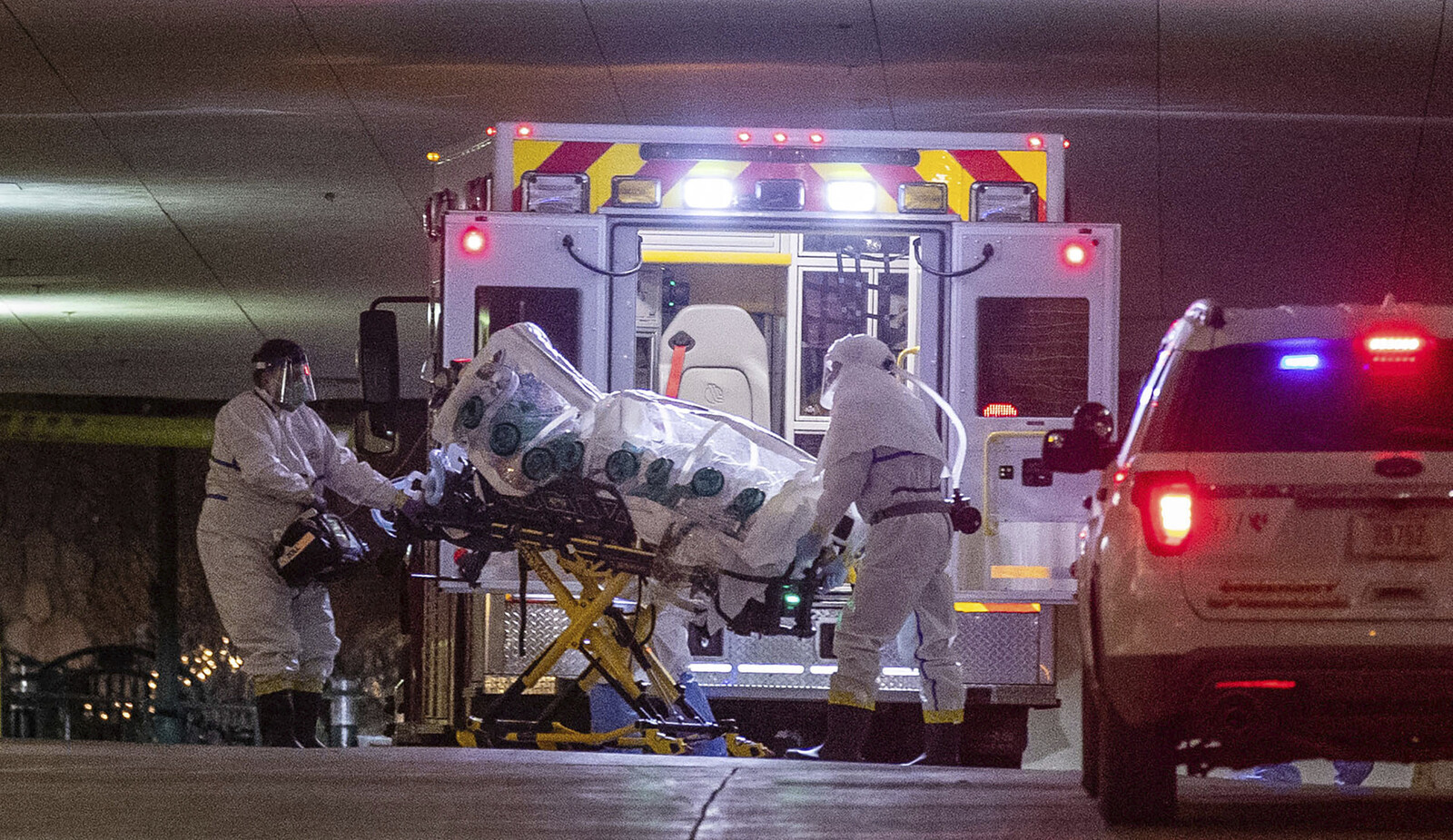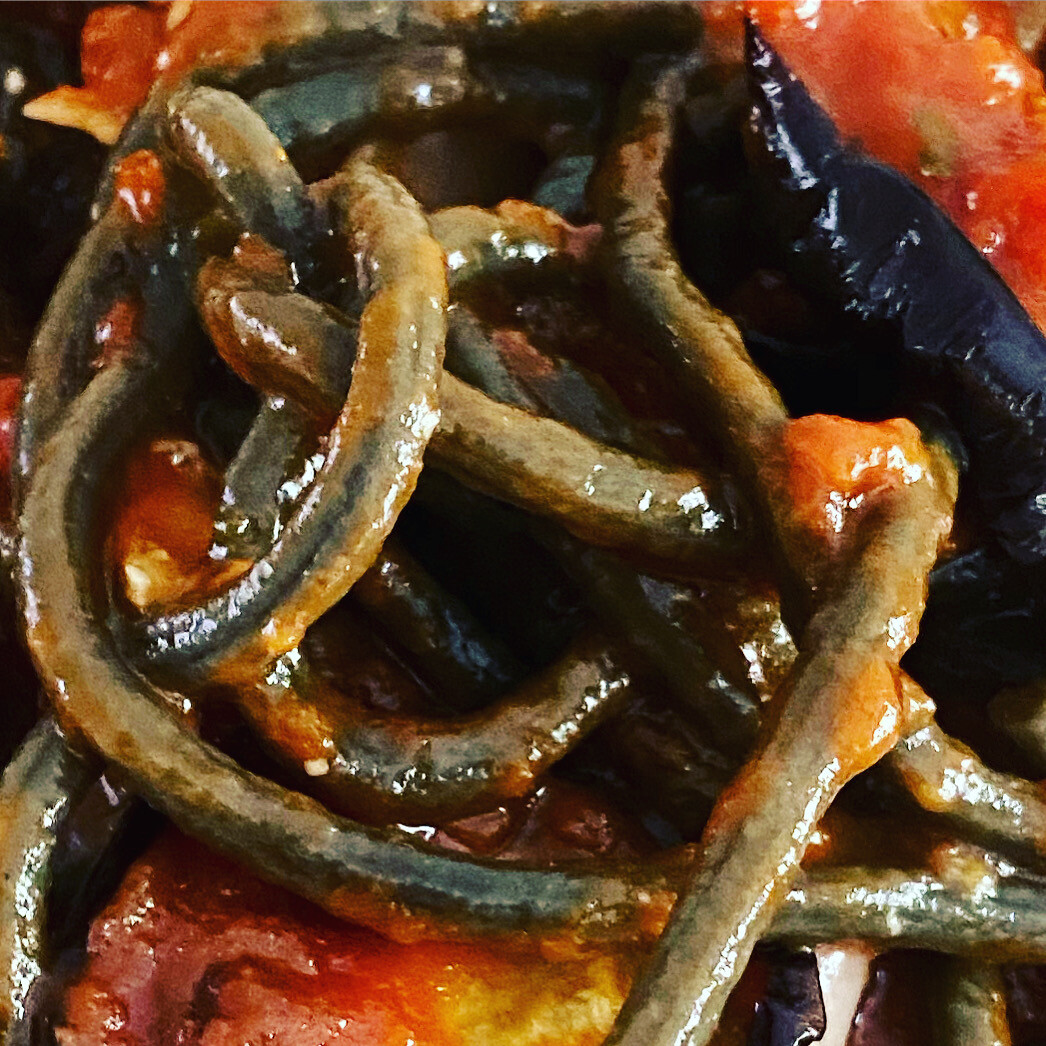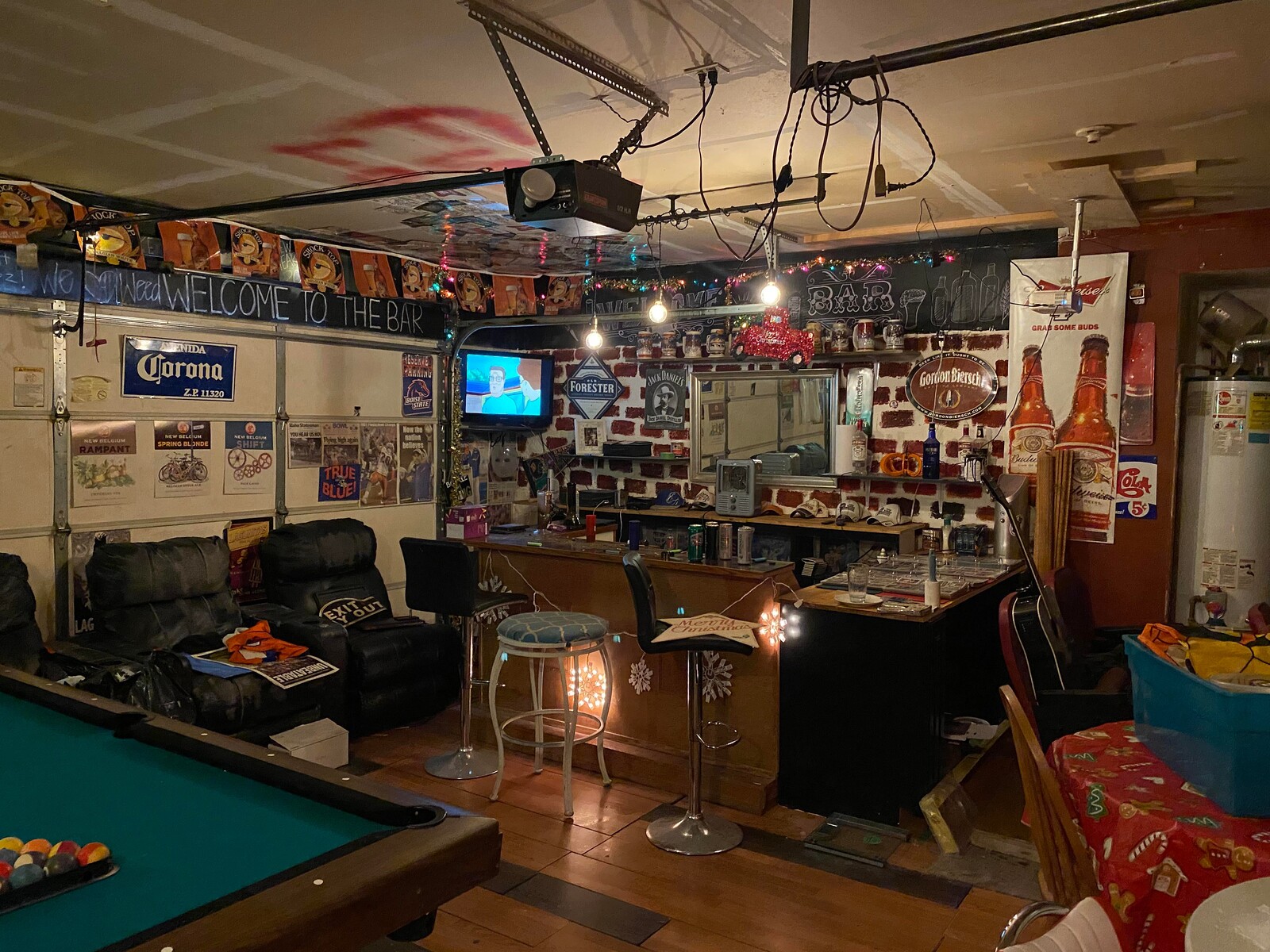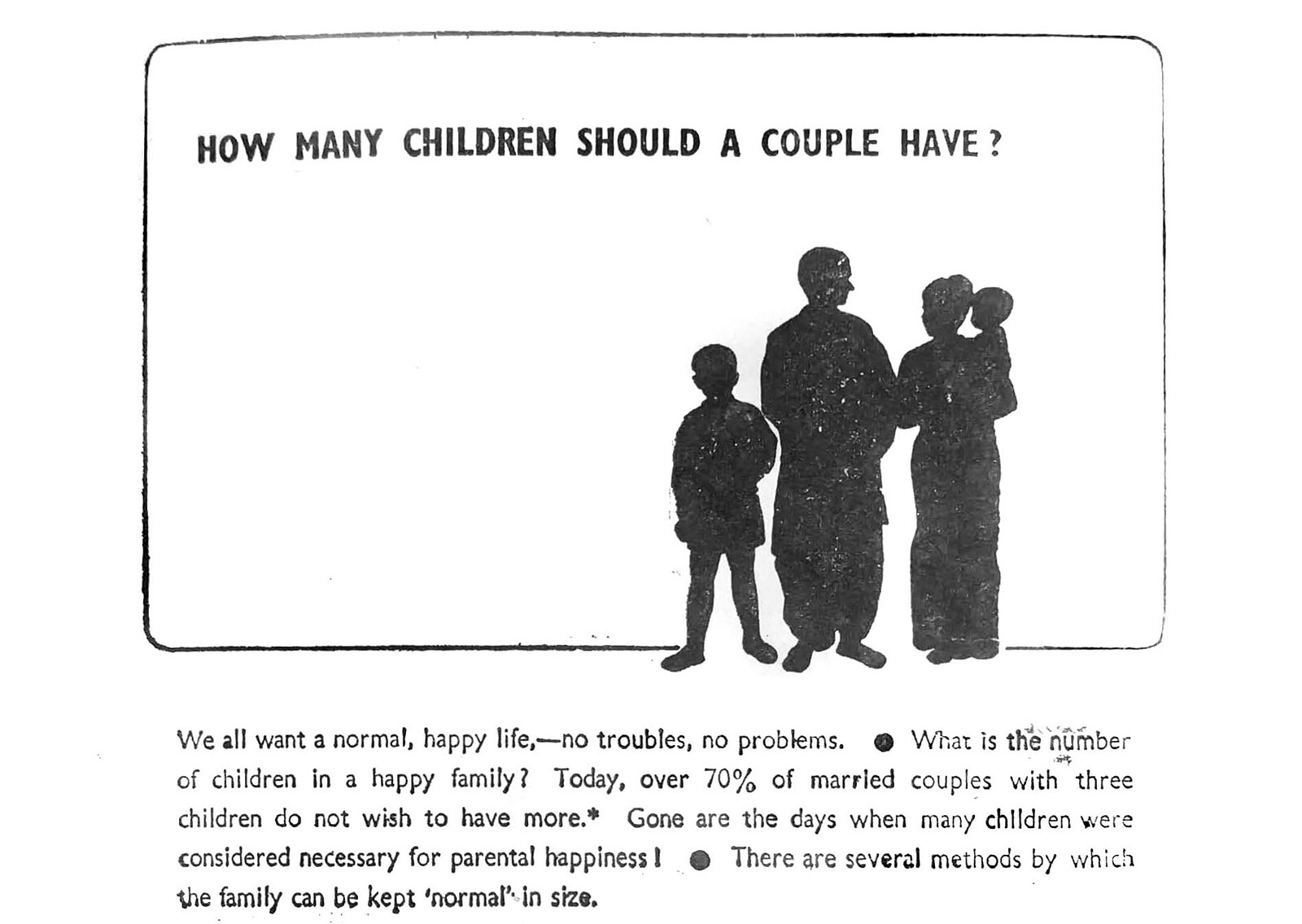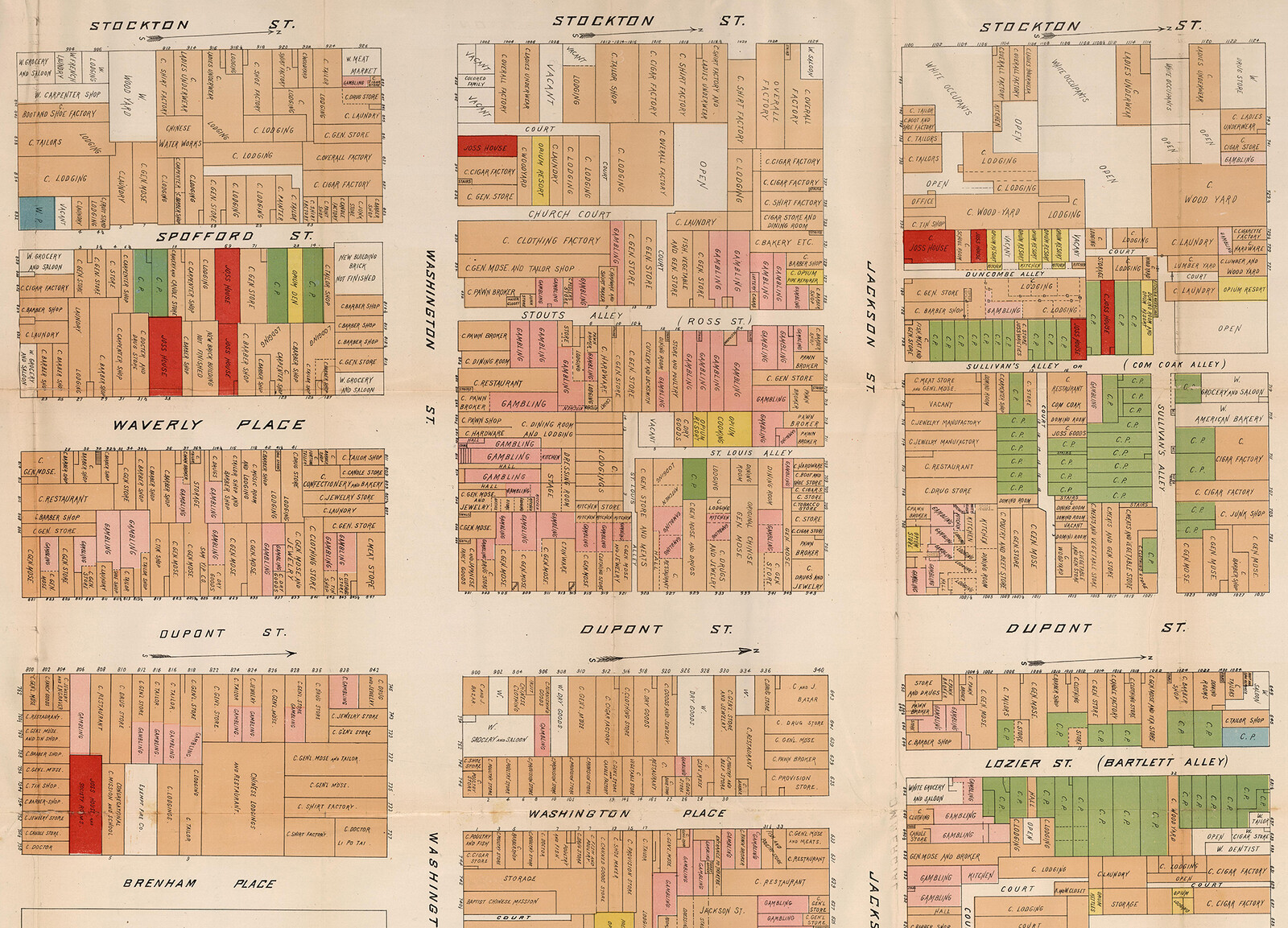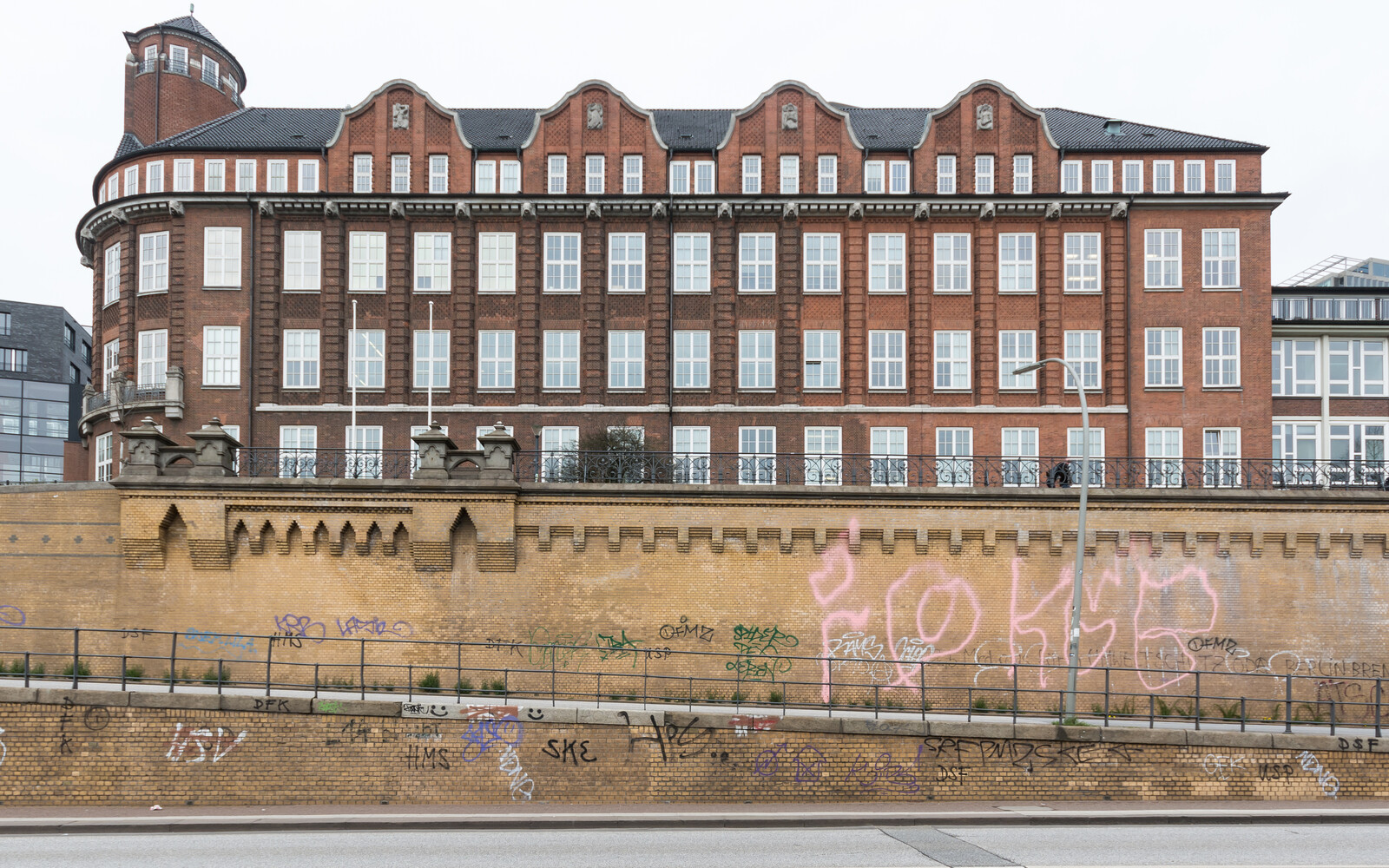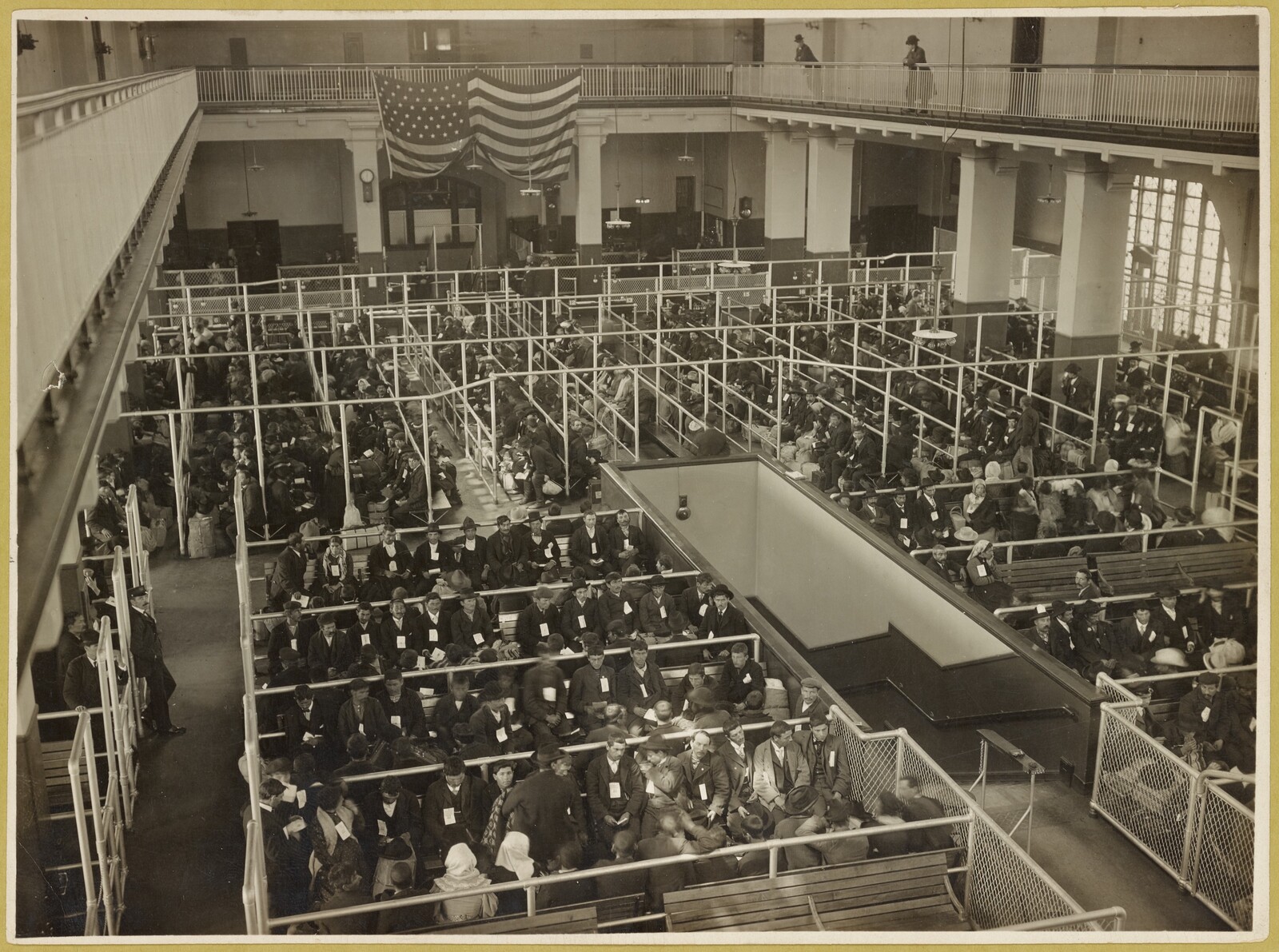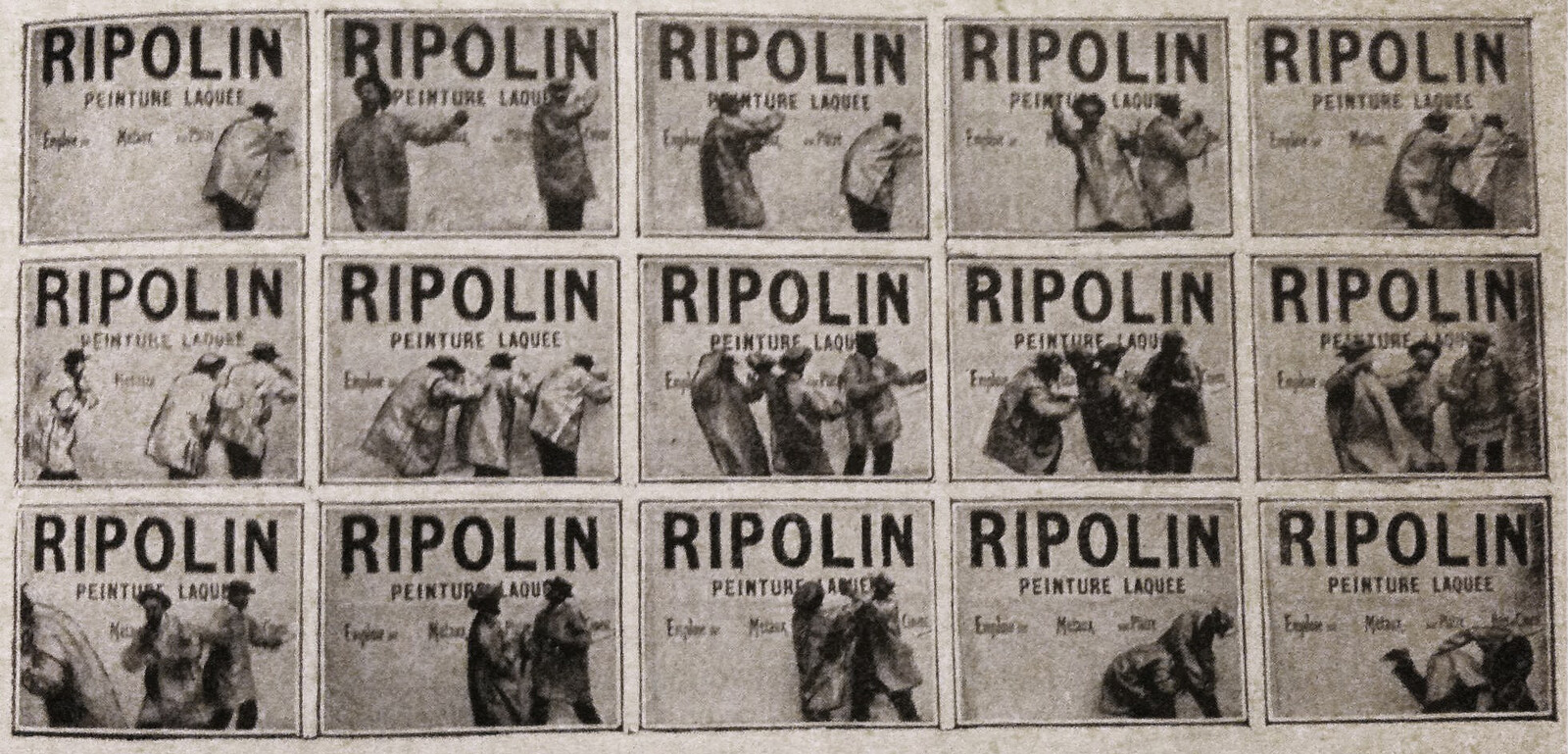I
As the plague smoldered in Milan in 1630, three French youths—a scholar, a painter, and an artisan—journeyed to the city from the north, in the hope of surveying famed Milanese monuments. Contemplating the bas-reliefs on the still-incomplete façade of the Duomo, the foreign admirers were seized with a sudden impulse to stroke the sculptural figures with their hands. In wordless awe, they rubbed the Candoglia marble as if sight alone could no longer suffice, unaware of a leery crowd of locals who distrustfully clustered around them. Scowling at the alleged evildoers, they quickly overwhelmed the young Frenchmen with furor and violence. Wronged as members of the untori, or “plague greasers,” a mythical group widely believed to have surreptitiously spread the contagious disease by daubing buildings with poisonous ointments, the visitors would have been lynched had the magistrates not apprehended the three of them.1
This story was witnessed and noted down, in Latin, by the seventeenth-century Italian chronicler Giuseppe Ripamonti, and was immortalized nearly two centuries later by Alessandro Manzoni in his monumental I promessi sposi (“The Betrothed,” 1827), who referenced Ripamonti’s eyewitness accounts of the 1630 plague of Milan as his major historical source. With measured irony, the novelist wrote: “As if to make sure that it was really marble, one of them reached out his hand to touch (“toccare”) the stone. That was enough.”2 To touch architecture—in this case, to ascertain its material—was culpable enough to justify conviction. As if the novelistic reappraisal of the epidemic’s social toxins of phobia and blame was inadequate, Manzoni strikingly appended to the second edition of I promessi sposi his now celebrated historical essay, Storia della colonna infame (“History of the Infamous Column,” 1840), which directly took as its subject the crooked trials of the untori.3 Indeed, at a moment when paranoid imputation and hysterical victimization pervaded the city, public buildings were deemed menacing, and to touch them was supposed to evince crime.
The transition (and translation) from Ripamonti’s Latin documentation of the event to Manzoni’s Italian reenactment of it is not as frictionless as it appears. In Ripamonti’s original text, the French travelers invoked the sense of touch precisely not to certify vision (as in Manzoni’s rewording, “per accertarsi ch’era marmo,” as if human sight alone was unreliable), but to complement it. In fact, Manzoni’s word “toccare” (“touch”) finds no Latin equivalent in the original; in Ripamonti’s version, the sense of touch is anything but explicit:
atque pulcherrimum hauserant oculis, etiam altero hoc delibare sensu, & manum subinde admouebant.
They drew close what to their eyes most exquisite, enjoyed [delibare] with this other sense, and immediately moved their hands.4
In other words, the tactile, this “other sense,” was only implied in the original source by Ripamonti; it was Manzoni himself who rendered the immensely ambiguous Latin word delibare (which is derived from completely different roots; this hardly translatable verb really means to pluck, to scrape off, to detract, and, by extension, to nibble, or to enjoy by tasting) into its unequivocal nineteenth-century version as toccare. In this translation from delibare to toccare, the sense of touch is abstracted out of an indefinite matrix of human sensibility to serve as vision’s verification.5
Strictly speaking, the three architectural pilgrims of 1630 did not “touch” the Duomo façade until two centuries later, when the novelist refigured the dead language of the chronicler and restaged their historic misfortune as fiction. The joined hands of a scholar, a painter, and an artisan (what story better allegorizes the perilous unification of the various departments—the scholarly, the artistic, and the technical—in the thing we call “architecture”?) “touched” the foreign monument they admired only belatedly.6 As multiple agents travelled through geography and time (just like the French youths), the fear of physical contact in the public space—largely induced by the fear of contagion (which was probably even more contagious than the disease itself)—gradually arrived at its modern definition.7
II
The French travelers’ fatal contiguity with architecture is complicated by the fact that the wall they touched did not belong to any building, but to a shrine of a divine being, a monument that—in its sacredness—had already assumed an ambivalent admixture of repulsion and attraction, taboo and temptation, mysterium tremendum et fascinans.8 The Latin word sacer, from which “sacred” is derived, is itself a well-known instance of a “contronym” that encompasses both holiness and impiety, adoration and abomination, or in spatial terms, embrace and forbiddance.9
In his essay “Touch,” the literary theorist Gabriel Josipovici mulls over a significant distinction between two attitudes towards the sense of touch in Christianity: touching as antidote to incredulity, and touching as encounter across space and time.10 According to Josipovici, the probative hand of Thomas the Apostle—more commonly known as Doubting Thomas, as he suspected Jesus’ resurrection when first told of it—epitomizes the former, while the pilgrims’ veneration of touchable relics exemplifies the latter. Poking his finger into Christ’s piercing wounds of the Passion, Doubting Thomas made bodily contact so as to procure physical evidence, since for him vision alone would not suffice to authenticate the seemingly impossible.11 In contrast, Josipovici claims that early medieval pilgrims—just like our French pilgrims of architecture—were not in the least doubting the virtue laid in the sites and artifacts that were the goal of their journey. The “contact relics,” such as the brandea of Saint Peter (the strips of cloth that touched the saint’s sarcophagus), were held to be as full of the saint’s praesentia—“the physical presence of the holy”—as any physical remains, and could emanate the same healing power.12 To touch the translated relic was therefore to converse with an invisible person of another spatio-temporal order. In Josipovici’s words, “Thomas was, in effect, a modern sceptic, unwilling to trust anything he could not himself see and touch,” while for the devout pilgrim, “the site of pilgrimage was not just the site of holiness and power, but rather the site of an encounter.”13
Manzoni’s retelling of Ripamonti’s story translates one attitude of touching to the other, and converts the three architectural pilgrims into “modern skeptics.” The heady adoration of the foreign travelers, as they felt with their fingers the grainy marbles of the Duomo façade to conjure up an invisible past and a possible future, was radically refashioned by the fiction writer into a suspicion of vision that was specific to its moment, stringently anchored to the visible (un)reality of the there and then.
Josipovici reminds us that only in the attitude of a devotees’ touch could the holy person ever heal any malady, be it the therapeutic laying-on of hands in various religious traditions, the performance of anointing rituals, or the touch of les Rois thaumaturges that cured scrofula.14 Probative, skeptical touch, is exactly the opposite: it is to touch only as a redress of vision’s inefficacy, as a sense of compensation and unbelief, as a supposedly contagious contact that might transmit infection. In various faith healing practices, touch is the agent of the cure; during an epidemic, however, it is simultaneously the very agent of the disease. Encounter and verification, delibare and toccare, do not define historical attitudes towards the sense of touch that succeeded one another. Rather, they have collided, coalesced, and coevolved ever since. Epidemics, in the most afflictive manner, lay bare their conflicts and contradictions.
III
With the outbreak of COVID-19, worshipers in Jerusalem were urged not to kiss the Western Wall.15 (To draw lips closer to hands, one could point to the clear gustatory connotation of delibare, not to mention the intimate derivation relationship between “taste” and “tactile.”) While the pious osculatory contact was held in check, it was the “touch” of disinfectant that grazed the revered wall in the Old City of Jerusalem.16 Similarly falling victim to the pandemic was the Spanish pre-Easter tradition in which Catholics line up to kiss statues of Jesus and Mary en masse all around the country. The umrah to Mecca was halted, keeping throngs of Muslims from kissing the Black Stone of the Kaaba. And not unlike the seventeenth-century untori, the Iranian gate-lickers at the Masumeh shrine in Qom faced prison.17
The list continues, echoing numerous episodes in the past concerning the far-flung histories of liturgical kissing, touching, and their medical repercussions. It is said that the fear of plague contagion was one of the reasons it became the custom, in many places in the late western Middle Ages, to kiss a pax with a devotional image during the mass in lieu of direct kissing among the celebrants and congregation, furthering a practice in which the manuscripts of missals would be vigorously kissed, and sometimes even nibbled.18 One may also revisit the 1656 plague of Rome, when Pope Alexander VII commissioned his artistic impresario Gian Lorenzo Bernini to cast a new series of bronze crucifixes—that is, crucifixes free of any trace of pestilence—for St. Peter’s Basilica, as the old ones were granted to the city’s lazarettos (or “quarantine stations”) to confer plenary indulgences upon moribund individuals who repented, confessed, took communion, and kissed the crucifixes carried by clerics.19 Bernini’s project was literally born out of the tension between the tactile desire for the devotional objects’ emanating healing power and the tactile avoidance of the “anti-relics”—the bodies of plague victims—that radiated disease and contamination (just like how medieval Venetian Christians feared touching Jews, since they identified the Jews with corruptive bodily vices, in addition to blaming them for spreading the plague).20 In the Christian tradition since the early Middle Ages, religious objects has long been associated with the “clean power” of God that could be played out in acts of faith healing.21 Pope Alexander VII’s evasion of touching the crucifixes due to sanitary concerns was therefore particularly anomalous.
One could further claim that the infiltration of a hygienic discourse into sacred space was a sign of religious disbelief. It is no coincidence that during the Protestant Reformation, which would eventually splinter the Catholic Church, the cleanliness of the touchable relics became an increasingly palpable issue. In one of his colloquies, the humanist scholar Erasmus offered a curious and most telling instance: on a day in the year of 1514, at the dawn of the English Reformation, he set out for a pilgrimage to the Canterbury shrine of Saint Thomas, in company with his friend dean John Colet. In the Cathedral, they were shown multiple saintly relics that the pilgrims were expected to kiss: the rusty dagger that supposedly pierced the brain of Thomas, the martyr’s hair shirt, skull, bones, teeth, the holy rag with which the saint wiped sweat, etc. On their way back to London, an old mendicant offered him a piece of Saint Thomas’s shoe to kiss. On this occasion, when Erasmus, to pacify the mendicant, gave him a coin, Colet exclaimed to his friend, “Do these fools wish us to kiss the shoes of every good man? They pick out the filthiest things they can find, and ask us to kiss them!”22 Colet’s hygienic concern surfaced as the fissure between the two tactile attitudes grew deep.
IV
With the Protestant Reformation, not only the validity and authenticity of many relics, but the efficacy of any relics were put into question.23 It is no coincidence that doubts towards spurious relics became increasingly widespread in late medieval and Renaissance Europe as the bubonic plague peaked. The saintly power of encounter was on the wane as suspicions of touchable relics abounded. When the sixteenth-century Franciscan François du Moulin pilgrimaged to the crypt of Basilique Sainte-Marie-Madeleine de Vézelay and was shown Mary Magdalene’s skull in reliquary with the supposed impression of Jesus’s fingers, he taunted that while the friars called the relic Noli me tangere (“Touch me not,” in reference to Jesus’s injunction to Mary Magdalene), it might better be called Noli me credere, “Believe me not.”24 Touching as anachronistic conversation with the invisible divinity was displaced by that of incredulity, cruelly unmasking the time-bending holy encounter as hoax. Occasions like this, in the words of the art historian Christopher S. Wood, are “moments where the deep structure of thinking about artifacts and time are revealed.”25
Josipovici’s two attitudes towards touching correspond to two modes of the sacred artifact’s temporality. In the attitude of the devout pilgrim, the artifact she ardently contacts not only constitutes a typological and topological token to the sacred, but also always inhabits a destabilized temporal life.26 It is not so much that the pilgrim travels in space to touch the artifact as that the artifact travels in time to touch the pilgrim, mediating an unbridgeable distance between a tangible now and an invisible past.27 In the attitude of the skeptic, on the other hand, the artifact’s mediation device collapses, mooring the outstretched hand, as it were, onto a precise moment along the chronological line as time’s inerrant witness and collator.
These two temporal modes coexist in all sacred artifacts. They are always in play, competing with one another, inducing a constant oscillation between temporal instability and chronology, encounter and verification, gullibility and incredulity, the idea of the relic and the idea of artistic authenticity, Ripamonti’s delibare and Manzoni’s toccare.28 In articulating a relationship to the sacred, the temporal mode of encounter tends to shroud that of suspicion. However, an anomalous situation—such as an epidemic—would radically exacerbate their clash, ruthlessly suspending the time-travel license of both the sacred artifact itself and the pilgrims from afar. (When could the three youths feel architecture again?) Perhaps we now need that license more than ever.
Giuseppe Ripamonti, De peste quae fuit anno MDCXXX libri V (Milano, 1640), 93–5. Manzoni could only have read the Latin version, as the book was not to be translated into Italian until 1841, by Francesco Cusani. For a general history of the untori accusations during the 1630 Plague of Milan, see Romano Canoso, Tempo di peste: magistrati ed untori nel 1630 a Milatio (Rome: Angelo Ruggieri, 1985); Samuel K. Cohn, Jr., “Plague Spreaders,” in Epidemics: Hate and Compassion from the Plague of Athens to AIDS (Oxford: Oxford University Press, 2018), 127–160.
Alessandro Manzoni, I promessi sposi (Milan: Mondadori, 1990), 525. The original text reads, “Come per accertarsi ch’era marmo, stesero essi la mano a toccare. Bastò.” English translation by Bruce Penman.
Again, Ripamonti was his principal source. For a discussion on Manzoni’s Storia as a notable historical addendum to the fictional I promessi sposi, see Hal Gladfelder, “Seeing Black: Alessandro Manzoni between Fiction and History,” MLN 108, no. 1, Italian issue (January 1993): 59–86. See also Claudio Povolo, The Novelist and the Archivist: Fiction and History in Alessandro Manzoni’s The Betrothed, trans. Peter Mazur (New York: Springer, 2014); Marco Codebò, “Records, Fiction, and Power in Alessandro Manzoni’s I promessi sposi and Storia della Colonna infame,” MLN 121, no. 1 (2006): 187–206.
Ripamonti, De peste, 94. The English translation is mine; I am grateful to Dong Hao and Zhang Xiaoxi of Princeton University for their help with the Latin language.
Manzoni’s purification and abstraction from delibare to toccare was not unique: in Francesco Cusani’s 1841 Italian translation of Ripamonti’s book, which postdated Manzoni’s novel by only a few years, the translator similarly reduced, if not utterly converted, the same Latin word to tasteggiare, or “to gently touch.” Giuseppe Ripamonti, La peste di Milano del 1630 libri V, trans. Francesco Cusani (Milano, 1841), 85. Cusani translated this sentence as “…e li vide tasteggiare quanto a loro sguardi sembrava pregevole in que’marmi.”
According to the definition of “architecture”—as opposed to mere “buildings”—of seventeenth-century Europe, the design of churches and other religious spaces assumed the most prominence. Hence religion’s supreme pertinence to the discipline of architecture at that time.
On blame, hatred, and persecution incurred by past epidemics, see Cohn, Jr., Epidemics, 2018. It may also be mentioned that there is a profound and exceedingly old connection between touching and epidemics. In Akkadian (the earliest attested Semitic language), the word for plague literally means “the touch or the blow of god.” In the Hebrew Bible, plagues are repeatedly referred to as “the touch,” not to mention the Greek and Latin origins of the English word itself, meaning “to strike, to beat.”
Rudolf Otto, The Idea of the Holy (Oxford: Oxford University Press, 1957). See also Douglas A. Marshall, “Temptation, Tradition, and Taboo: a Theory of Sacralization,” Sociological Theory 28, no. 1 (2010): 64–90; Giorgio Agamben, “The Ambivalence of the Sacred,” in Homo Sacer: Sovereign Power and Bare Life, trans. Daniel Heller-Roazen (Stanford: Stanford University Press, 1998), 75–81.
Carl Abel, Über den Gegensinn der Urworte (Leipzig: W. Friedrich, 1884); Sigmund Freud, “The Antithetical Meaning of Primal Words, 1910,” in Standard Edition 11 (London: Hogarth Press, 1957), 153–161, first published in 1910 as Sigmund Freud, “Über den Gegensinn der Urworte,” in Gesammelte Werke 8 (Frankfurt am Main: S. Fischer Verlag, 1910), 213–221.
See Gabriel Josipovici, Touch (New Haven: Yale University Press, 1996), 58–61.
John 20: 25, New Revised Standard Version.
See Peter Brown, The Cult of the Saints: Its Rise and Function in Latin Christianity (Chicago: The University of Chicago Press, 1981), 88. Brown’s book is one of Josipovici’s major references.
Josipovici, Touch, 61.
Ibid., 62–4. A very famous study on the royal touch is Marc Bloch’s The Royal Touch: Sacred Monarchy and Scrofula in England and France, trans. J. E. Anderson (London: Routledge & Kegan Paul, 1973). The healing touch is incorporated into spiritual rituals in multiple religious traditions. Touching consecrated objects in Buddhism, Hinduism, Sikhism, etc. or drinking (the Amrita, for instance) as healing rituals was ancient; in the Gospels one finds numerous accounts of Jesus touching the affected parts of the blind, the lame, or the leprous; the Islamic prophet Muhammad was reported to have performed healing miracles by touching the sick; consuming the Taoist talismanic water (符水 fu shui, ashes from burnt talismans dissolved in water) was believed to cure diseases (I am grateful to Du Yalin of Princeton University for this reference); one could continue.
See Jacob Magid, “To Kiss or Not to Kiss: The Question for Old City Pilgrims amid Virus Outbreak,” The Times of Israel, March 12, 2020.
See Celia Jean, “Western Wall Notes Removed for Passover, Stones Sanitized for Coronavirus,” The Jerusalem Post, March 31, 2020.
See Jon Nazca and Silvio Castellanos, “Another Victim of Coronavirus: Spain’s Religious Statue-kissing,” Reuters, March 6, 2020; Rozina Sini and Armen Shahbazian, “Coronavirus: Iran holy-shrine-lickers face prison,” BBC, March 3, 2020; Vivian Yee, “In a Pandemic, Religion Can Be a Balm and a Risk,” New York Times, March 22, 2020.
See Kathryn M. Rudy, “Kissing Images, Unfurling Rolls, Measuring Wounds, Sewing Badges and Carrying Talismans: Considering Some Harley Manuscripts Through the Physical Rituals They Reveal,” Electronic British Library Journal (2011); Constance Classen, The Deepest Sense: A Cultural History of Touch (Champaign: University of Illinois Press, 2012), 150.
See Sheila Barker, “Art, Architecture, and the Roman Plague of 1656,” in La Peste a Roma (1656–1657), ed. Irene Fosi (Rome: Università degli Studi Roma Tre—CROMA, 2006), 243–262; Roberto Battaglia, “Crocifissi del Bernini in S. Pietro,” Quaderni di studi romani XI (1942): 3–21; Ursula Schlegel, “I crocifissi degli altari in San Pietro in Vaticano,” Antichità viva XX (1981): vi, 37–42.
I took the expression “anti-relic” from Constance Classen’s discussion on the fear of touching the bodies of plague victims. See Classen, The Deepest Sense, 150. For the medieval Venetian Christians’ fear and isolation of Jews, see Richard Sennet, “Fear of Touching,” in Flesh and Stone: The Body and the City in Western Civilization (New York and London: W. W. Norton & Company, 1994), 212–254.
On the “clean power” in association with holy sites and sacred artifacts, see Brown, The Cult of the Saints.
See Henry Donald Maurice Spence-Jones, The Church of England: A History for the People, vol. II: The Medieval Church (London: Cassell, 1897), 424–427.
On the decline of the sacred touch in relation to the Reformation, see Craig Koslofsky, “The Kiss of Peace in the German Reformation,” in The Kiss in History, ed. Karen Harvey (Manchester: Manchester University Press, 2005), 18–35.
See Marjorie O’Rourke Boyle, Senses of Touch: Human Dignity and Deformity from Michelangelo to Calvin (Leiden: Brill, 1998), 122. François du Moulin called the skull into doubt because he believed that the evangelists never wrote Jesus touched her forehead.
Christopher S. Wood, Forgery, Replica, Fiction: Temporalities of German Renaissance Art (Chicago: The University of Chicago Press, 2008), 12.
I am inspired by Alexander Nagel’s discussion on the topographical instability of medieval churches (his cases are Giotto’s Arena chapel and the Holy Sepulcher of Jerusalem). See Alexander Nagel, Medieval Modern: Art Out of Time (London: Thames & Hudson, 2012), 97–115.
On the idea of vital/vibrant artifacts, which would not only (as in our context) challenge a traditionally anthropocentric architectural/art-historical discourse, but also problematize certain notions of materiality at large, see Jane Bennett’s influential book: Jane Bennett, Vibrant Matter: A Political Ecology of Things (Durham: Duke University Press, 2009).
My claim here on the two temporal modes of the sacred artifact is indebted to Alexander Nagel and Christopher S. Wood’s perceptive theoretical construction in their co-authored Anachronic Renaissance. See Alexander Nagel and Christopher S. Wood, “Plural Temporality of the Work of Art,” in Anachronic Renaissance (Princeton: Zone Books, 2010), 7–20.
Sick Architecture is a collaboration between Beatriz Colomina, e-flux Architecture, CIVA Brussels, and the Princeton University Ph.D. Program in the History and Theory of Architecture, with the support of the Rapid Response David A. Gardner ’69 Magic Grant from the Humanities Council and the Program in Media and Modernity at Princeton University.
